Grace Hopper
description: an American computer scientist and US Navy rear admiral, known for pioneering work in computer programming
65 results
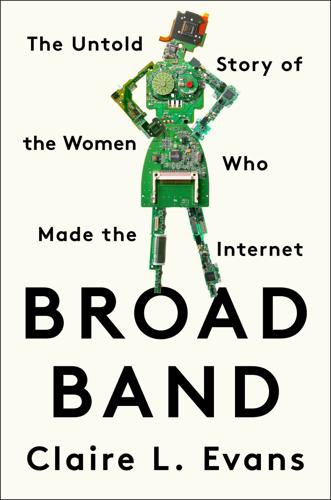
Broad Band: The Untold Story of the Women Who Made the Internet
by
Claire L. Evans
Published 6 Mar 2018
“a very delightful person”: Hopper, interview by Merzbach, 1969, 3. “We all accepted Pres”: Bartik, Pioneer Programmer, 138–40. A year into her employment: Ibid., 123. “That’s how so many secretaries”: Captain Grace Hopper, “Oral History of Captain Grace Hopper: Interviewed by Angeline Pantages,” December 1980, Computer History Museum, 27, www.computerhistory.org/collections/oralhistories. But only EMCC had working machines: Beyer, Grace Hopper, 171. “slipped into UNIVAC like duck soup”: Hopper, interview by Merzbach, 1969, 10. “if the programmer and the engineer”: Holberton, interview by Ross, 1983, 6–7. “if anyone could do something”: Bartik, Pioneer Programmer, 123.
…
Jean Sammet, one of the chairs of the CODASYL committee and a great admirer of Grace Hopper, pointed out that “usefulness and elegance are not necessarily the same thing.” She remembered the monumental nature of the task: COBOL represents an attempt by a group of competitors to set aside their interests and create something benefiting everyone at the table, many of whom sacrificed existing projects for business or commercial software languages. COBOL was designed by committee, but it was technological armistice, a ceasefire for the good of the art. In Jean Sammet’s estimation, Grace Hopper did “as much as any other single person to sell many of these concepts from an administrative and management, as well as technical, point of view.”
…
“when the computer wore a skirt”: Jim Hodges, “She Was a Computer When Computers Wore Skirts,” 2008, www.nasa.gov/centers/langley/news/researchernews/rn_kjohnson.html. CHAPTER TWO: AMAZING GRACE As Grace began her graduate studies: From which she was only the eleventh woman to receive a PhD in mathematics. Her intellectual ambidexterity was legendary: Kathleen Broome Williams, Grace Hopper: Admiral of the Cyber Sea (Annapolis, MD: Naval Institute Press, 2004), 12. It was a nice vacation from the breakneck: Williams, Grace Hopper, 16. “one jump ahead of the students”: Grace Murray Hopper, interview by Uta Merzbach, July 1968, Computer Oral History Collection, Archives Center, National Museum of American History, Smithsonian Institution, 16, http://amhistory.si.edu/archives/AC0196.pdf.

AIQ: How People and Machines Are Smarter Together
by
Nick Polson
and
James Scott
Published 14 May 2018
We use the term “compiler” to encompass both concepts here. 4. Kathleen Broome Williams, Grace Hopper: Admiral of the Cyber Sea (Annapolis, Md.: Naval Institute Press, 2004), 1. 5. Ibid., 2. 6. Ibid., 11. 7. Ibid., 18–20. 8. Ibid., 22. 9. Ibid., 26. 10. Ibid., 29. 11. Ibid., 27–28. 12. Ibid., 82. 13. Kurt W. Beyer, Grace Hopper and the Invention of the Information Age (Cambridge, Mass.: MIT Press, 2009), 53. 14. Douglas Hofstadter, Gödel, Escher, Bach: An Eternal Golden Braid (New York: Vintage, 1980), 290. 15. Williams, Grace Hopper, 70. 16. Ibid., 80. 17. Ibid., 85. 18.
…
Along the way, she became the first person in history to get a computer to understand English. So the story of machines that can speak, listen, and write—the story of Watson, Alexa, chatbots, Google Translate, and all the other linguistic marvels of the digital world—really all begins with Amazing Grace. Grace Hopper, Queen of Software Grace Hopper was born in New York City in 1906. As a young girl she learned quickly that her family held two values in especially high esteem: self-sufficiency and service to country. She and her parents were on a summer trip to New Hampshire, and Grace was out paddling a canoe by herself. Suddenly a gust of wind capsized the canoe, dumping Grace into the lake.
…
Hopper died in 1992, but her legacy lives on. Over the years she’s had many things named after her, including a navy ship, a Cray supercomputer, and Grace Hopper College, at Yale University. She was posthumously honored with a Google Doodle in December of 2013, and with a Presidential Medal of Freedom in November of 2016. No doubt her great-grandfather the admiral would have been proud. Through her efforts to bring people and machines a bit closer together through language, Grace Hopper played an enormous role in inventing the modern world. 5 THE GENIUS AT THE ROYAL MINT Real-time monitoring, from sports to policing to financial fraud: what Isaac Newton’s worst mathematical mistake can teach you about the search for anomalies in massive data sets.

The Innovators: How a Group of Inventors, Hackers, Geniuses and Geeks Created the Digital Revolution
by
Walter Isaacson
Published 6 Oct 2014
See Judy Green and Jeanne LaDuke, Pioneering Women in American Mathematics: The pre-1940 PhDs (American Mathematical Society, 2009), 53; Beyer, Grace Hopper, 25 and 26. 4. Hopper oral history, Smithsonian, July 5, 1972. 5. Hopper oral history, Smithsonian, July 1968; Rosario Rausa, “In Profile, Grace Murray Hopper,” Naval History, Fall 1992. 6. Hopper oral histories (she told the same story), Computer History Museum and Smithsonian, July 5, 1972. 7. The Staff of the Harvard Computation Library [Grace Hopper and Howard Aiken], A Manual of Operation for the Automatic Sequence Controlled Calculator (Harvard, 1946). 8. Grace Hopper oral history, Computer History Museum. 9. Beyer, Grace Hopper, 130. 10. Beyer, Grace Hopper, 135. 11.
…
Richard Bloch oral history, Charles Babbage Institute, University of Minnesota. 12. Beyer, Grace Hopper, 53. 13. Grace Hopper and Richard Bloch panel discussion comments, Aug. 30, 1967, in Henry S. Tropp, “The 20th Anniversary Meeting of the Association for Computing Machinery,” IEEE Annals, July 1987. 14. Beyer, Grace Hopper, 5. 15. Hopper oral history, Smithsonian, July 5, 1972. 16. Howard Aiken oral history, conducted by Henry Tropp and I. Bernard Cohen, Smithsonian Institution, Feb. 1973. 17. Grace Hopper and John Mauchly, “Influence of Programming Techniques on the Design of Computers,” Proceedings of the IRE, Oct. 1953. 18.
…
Alan Turing, “Intelligent Machinery,” National Physical Laboratory report, July 1948, available at http://www.AlanTuring.net/intelligent_machinery. 2. In addition to the sources cited below, this section draws from Kurt Beyer, Grace Hopper and the Invention of the Information Age (MIT, 2009), and the following trove of Grace Hopper oral histories: Smithsonian (five sessions), July 1968, Nov. 1968, Jan. 7, 1969, Feb. 4, 1969, July 5, 1972; the Computer History Museum, Dec. 1980; Grace Hopper interview, Sept. 1982, Women in Federal Government oral history project, Radcliffe Institute, Harvard. 3. Kurt Beyer mistakenly calls her the first to get a math doctorate from Yale.

1947: Where Now Begins
by
Elisabeth Åsbrink
Published 31 Jul 2016
There is a flat spring in its case. Adjacent to it is a pinion. The pendulum swings from one tick to another. The amplitude in between is called time. Grace Hopper is interested in calculations. She was seven years old when she opened all seven clocks at home. After that, her parents made sure she received an education in physics and mathematics. In the course of her life, she holds a string of posts that have no job title, simply because she herself invents them. Grace Hopper increasingly absorbs the future into herself. Now she is at Harvard, having been appointed to a wartime post as a mathematician in the US Navy — despite being a woman.
…
Despite their luxurious residences and luxurious cars, the Journal writes, Cominform staff live like prisoners. Cambridge, Massachusetts Grace Hopper walks a tightrope between two languages. The field in which she establishes herself lies between machine and human. She drinks too much, smokes too much, works too much. It is a lonely life. There comes a time when she wants to give up, but she keeps going, sobers up, and returns to the work that she herself invents. Computers are her workmates, huge beasts to be tamed, and she becomes their tamer. Grace Hopper thinks less about what the machines actually do than about what they might do. One never knows.
…
She sits at her desk for hours on end, her head bent over her calculations. Later, when each new computer requires its own intermediary language, threatening the expanding information technology empire with fragmentation, Grace Hopper leads work on creating a single, standardized programming language, COBOL. “I can get a computer to do exactly what I want, as long as I define it.” There are a thousand reasons to open a clock. When seven-year-old Grace Hopper opens seven clocks, there must be at least seven thousand reasons. Now she uses figures to construct a language to talk to a machine. Buenos Aires One of the men who arrive in Buenos Aires in 1947 is the Swedish Nazi and SS volunteer Hans-Caspar Kreuger.
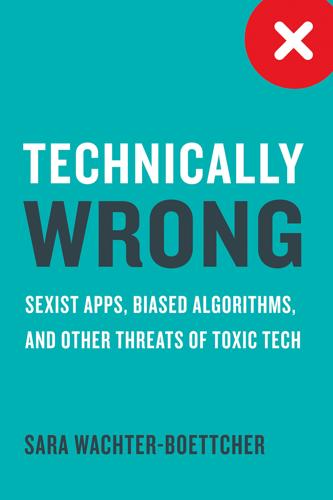
Technically Wrong: Sexist Apps, Biased Algorithms, and Other Threats of Toxic Tech
by
Sara Wachter-Boettcher
Published 9 Oct 2017
And so she felt invisible—erased from an event that, she thought, was designed for people like her: young women aiming to kick-start their technical careers. Thomas had good reason to think Grace Hopper would lead to internship opportunities, too. These companies talk endlessly about how hard it is to find enough programmers to fill their positions. Other women told her they’d left the event swimming in job offers to choose from. But looking back, Thomas realized that those women all had something in common: they were white. She is black. So she started talking with other women of color and found that their experiences were similar: they felt ignored or overlooked in a sea of white faces. It’s not just Grace Hopper. You can’t throw a pebble in Palo Alto without hitting a corporate-funded “diversity” event these days—like the “Lean In” circles that Facebook executive Sheryl Sandberg advocated in her book of the same name, or the ubiquitous code camps for kids from low-income homes put on by companies like Google.
…
That’s the argument Facebook used in the summer of 2016, when it released yet another report showing minimal improvements in diversity (for example, only 29 percent of the new senior hires in the year leading up to the report were women, a number that barely changed the company’s overall picture of senior leadership, which is just 27 percent women).10 “Appropriate representation in technology or any other industry will depend upon more people having the opportunity to gain necessary skills through the public education system,” said Williams, the diversity head, who then went on to expound on how few women and black people study computer science in high school or college. Kaya Thomas sees it differently. Back in October 2014, when she was a sophomore computer science major at Dartmouth, she headed to Houston for the Grace Hopper Celebration of Women in Computing—a massive conference full of famous speakers, big budgets, and lots of conference swag. She was ready. She had just completed an internship at Time Inc., where she’d worked on a new app for Entertainment Weekly. She’d also just launched an iPhone app of her own, We Read Too, which helps kids and teens find books featuring people of color.
…
She’d also just launched an iPhone app of her own, We Read Too, which helps kids and teens find books featuring people of color. She had worked in an on-campus lab building games. She had contributed to open-source code projects. And she’d put it all on a résumé she hoped would catch the attention of the “cool” tech companies that attend Grace Hopper to recruit interns and new staffers, and get some good PR for supporting women in technology—companies like Twitter, Pinterest, Apple, and Google. It seemed perfect for Thomas. But as she walked around the career-fair floor, she didn’t get the warm welcome she’d expected. In fact, most of the recruiters didn’t even want to see her résumé.

Brotopia: Breaking Up the Boys' Club of Silicon Valley
by
Emily Chang
Published 6 Feb 2018
“Why Is Silicon Valley So Awful to Women?”: Liza Mundy, “Why Is Silicon Valley So Awful to Women?,” Atlantic, April 2017, https://www.theatlantic.com/magazine/archive/2017/04/why-is-silicon-valley-so-awful-to-women/517788. she attended the Grace Hopper Celebration of Women: Sheryl Sandberg et al., “GHC 2013 Keynote Sheryl Sandberg, Maria Klawe, Telle Whitney,” Grace Hopper Celebration of Women in Computing, Nov. 9, 2013, https://www.youtube.com/watch?v=362AygQGMGk. Chou wrote a Medium essay: Tracy Chou, “Where Are the Numbers?,” Medium, Oct. 11, 2013, https://medium.com/@triketora/where-are-the-numbers-cb997a57252.
…
In his history of the internet, The Innovators, Walter Isaacson points out that while men focused on building computer hardware in the industry’s early days, it was women who pioneered the equally important task of developing software—that is, telling the machines what to do. One pioneer was Grace Hopper, a mathematics PhD and rear admiral in the U.S. Navy, who in 1944 programmed the Mark I, a giant computer at Harvard University. During World War II, the Mark I helped design the atomic bombs America would drop the following year. Hopper had an uncanny ability to translate problems into mathematical equations, then communicate them to machines in a language they could process.
…
Sporting a dress, pearly earrings, and a short bouffant, she smiled broadly as she pointed to a computer screen. One woman quoted explained that she thought she would just be pressing buttons all day but instead discovered that “I figure out how the computer can solve a problem and then instruct the machine to do it.” Cosmopolitan even interviewed Grace Hopper, who compared programming to planning a dinner, something she said women are expert at because of their patience and attention to detail. “Women are ‘naturals’ at computer programming,” Hopper declared matter-of-factly. Cosmo backed her up, declaring this “a whole new kind of work for women . . .

Empire of the Sum: The Rise and Reign of the Pocket Calculator
by
Keith Houston
Published 22 Aug 2023
Navy requisitioned the ASCC and put Aiken, a Navy reservist, in charge of it.53 The machine spent the war computing gunnery tables and optimizing ship designs, and may even have simulated America’s first atomic bomb.54 Among the naval personnel who ran the ASCC during this time was a lieutenant named Grace Hopper, who showed both an affinity for working with the machine and a sympathy for its human wranglers. It was Hopper who collated and edited the ASCC’s five-hundred-page manual, and who would, later in her career, create the first “compiler”—a software program that lets coders write applications not in the terse, error-prone language of the machine itself but rather in high-level, human-readable terms.55 Software development as it is today owes an enormous debt of gratitude to Hopper’s work.
…
Cambridge, MA: Harvard University, 1944. http://waywiser.fas.harvard.edu/objects/20119/ibm-asccmark-i-photo-album-leftright-panorama-of-mark-i-d. Image courtesy of Collection of Historical Scientific Instruments, Harvard University. There is a striking comparison to be drawn between Howard Aiken and Grace Hopper on the one hand and Charles Babbage and Ada Lovelace on the other. One of Aiken’s many inspirations, Babbage was the irascible nineteenth-century genius behind the fabled “analytical engine,” a mechanical computer that, had it ever been completed, would have pre-dated all other general-purpose computers, the ASCC included.56 Ada King, countess of Lovelace and the only child of the infamously “mad, bad, and dangerous to know” Lord Byron, saw more clearly than Babbage himself how the analytical engine could be turned to myriad different purposes.57 Aiken and Babbage may have invented the hardware, but Hopper and Lovelace understood that software was the key to making the best of it.
…
A study done there found that relays tended to fail once every 2 to 3 million cycles, which equated to four or five errors per day in Bell’s more advanced computers.70 Howard Aiken’s Mark I and Mark II computers had no such safeguards, which led to one of the most celebrated incidents in computing history.71 While running an error-checking calculation on the Mark II, an unnamed engineer* tracked down a persistent failure to a single relay—relay #70 in Panel F, it turned out—which had been incapacitated by an errant moth.72 Grace Hopper taped the insect into her logbook and recorded it as “First actual case of bug being found.”73 The concept of a computer “bug,” already in common currency, was immortalized. The relay’s shortcomings meant that its reign in the world of calculation would be short. Better switches were on the way, to be embraced by the makers of computers and calculators alike, but the Kashios had taken their eyes off the ball.

Geek Sublime: The Beauty of Code, the Code of Beauty
by
Vikram Chandra
Published 7 Nov 2013
You’ve got what it takes.”21 In 1967, Cosmopolitan magazine carried an article titled “The Computer Girls” that emphasized that programming was a field in which there was “no sex discrimination in hiring”—“every company that makes or uses computers hires women to program them … If a girl is qualified, she’s got the job.” Admiral Grace Hopper, programming pioneer, assured the Cosmo readers that programming was “just like planning a dinner … You have to plan ahead and schedule everything so it’s ready when you need it. Programming requires patience and the ability to handle detail. Women are ‘naturals’ at computer programming.”22 Already, though, the “masculinization process” of the computing industry was underway.
…
The “masculinization process” that Ensmenger describes has resulted in a contemporary American culture of programming that is overwhelmingly male, as one can see at conferences, on websites and blogs. The metaphors used within this world of one-man armies are very often martial. Teams working against impossible deadlines go on “death marches.” Finding and fixing defects in software is a pains-taking, detail-oriented task, one which Grace Hopper might have compared to housekeeping; but in the parlance of many programming shops, the most proficient bug sweepers are “bug slayers.” In March 2011, David Barrett, CEO of Expensify (“Expense Reports That Don’t Suck”), blogged about how his start-up wouldn’t hire programmers who used Microsoft’s very large and elaborate .NET framework, which—according to him—provided ready-made, assembly-line tools that turned these programmers into drudges capable of only mass-producing pre-designed code, the programming equivalent of fast-food burgers.
…
One of the hallmarks of a cultural system that is predominant is that it succeeds, to some degree, in making itself invisible, or at least in presenting itself as the inevitable outcome of environmental processes that exist outside of the realm of culture, within nature. The absence of women within the industry is thus often seen as a hard “scientific” reality rooted in biology, never mind that the very first algorithm designed for execution by a machine was created by Lady Ada Byron, never mind Grace Hopper’s creation of the first compiler, and never mind that the culture of the industry may be foreign or actively hostile to women. The tech industry prides itself on being populated by rational thinkers, by devotees of the highest ideals of freedom and equality. Human resources departments are rightfully leery of litigation, and try to protect the companies through training and education.
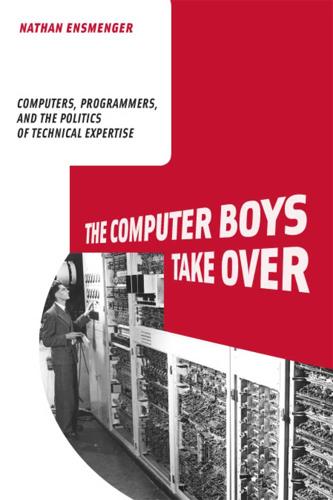
The Computer Boys Take Over: Computers, Programmers, and the Politics of Technical Expertise
by
Nathan L. Ensmenger
Published 31 Jul 2010
This had the positive effect of convincing the ENIAC managers that programmers were essential to the success of the overall project and that well-informed, technically proficient, high-quality programmers were especially indispensable. Thus, what was supposed to have been a low-level skill, a static activity, prepared these women coders well for careers as programmers, and indeed, those who did pursue professional careers in computing often became programmers and thrived at it. A few women, Grace Hopper and Betty Holberton of UNIVAC as well as Ida Rhodes and Gertrude Blanche of the National Bureau of Standards in particular, continued to serve as leaders in the programming profession. But despite the success of the ENIAC women in establishing a unique occupational niche for the programmer within the ENIAC community, programming continued to be perceived as marginal to the central business of computer development.
…
Not only did the widespread personnel problem in computing make it possible for women to break into the industry but the field was also currently “overrun with males,” making it easy to find desirable dating prospects. Programming was “just like planning a dinner,” the article quoted software pioneer Admiral Grace Hopper as saying. “Women are ‘naturals’ at computer programming.” And in true Cosmopolitan fashion, the article was also accompanied by a quiz: in this case, a mini programmer aptitude test adapted from an exam developed at NCR.103 The influx of new programmer trainees and vocational school graduates into the software labor market only exacerbated an already-dire labor situation.
…
The Short Order Code allowed Mauchly to directly enter equations into the BINAC using a fairly conventional algebraic notation. The system did not actually produce program code, however: it was an interpretative system that merely called up predefined subroutines and displayed the result. Nevertheless, the Short Order Code represented a considerable improvement over the standard binary instruction set. In 1951 Grace Hopper, another UNIVAC employee, wrote the first automatic program compiler. Although Hopper, like many other programmers, had benefited from the development of a subroutine library, she also perceived the limitations connected with its use. In order to be widely applicable, subroutines had to be written as generically as possible.

Hit Refresh: The Quest to Rediscover Microsoft's Soul and Imagine a Better Future for Everyone
by
Satya Nadella
,
Greg Shaw
and
Jill Tracie Nichols
Published 25 Sep 2017
We need to be willing to lean into uncertainty, to take risks, and to move quickly when we make mistakes, recognizing failure happens along the way to mastery. Sometimes it feels like a bird learning to fly. You flap around for a while, and then you run around. Learning to fly is not pretty but flying is. If you want to see what flapping around looks like, do a search for me and karma. It’s a fall day in Phoenix, Arizona, and I am attending the Grace Hopper celebration of women in computing, the world’s largest gathering of women technologists. Diversity and inclusion is a bedrock strategy in building the culture we need and want, but as a company and as an industry we’ve come up far too short. According to one report, women in the United States held 57 percent of professional occupations in the 2015 workforce, but only 25 percent of professional computing occupations.
…
During this time, I also found myself reflecting on the sacrifices my mother made for me and the challenging decision Anu had made to leave her promising career as an architect to care for Zain and our two girls full-time for more than two decades. She made it possible for my career to advance at Microsoft. Since my remarks at Grace Hopper, Microsoft has made the commitment to drive real change in this area—linking executive compensation to diversity progress, investing in diversity programs, and sharing data publicly about pay equity for gender, racial, and ethnic minorities. In some ways, I’m glad I messed up in such a public forum because it helped me confront an unconscious bias I didn’t know I had, and it helped me find a new sense of empathy for the great women in my life and at my company.
…
See also United Kingdom British Raj, 16, 186–87 broadband infrastructure, 225 Buddha, Gautama, 9 Burgum, Doug, 47–48 cable TV, 30 Cairo, 214, 218 cameras, 150 Canada, 230 cancer, 142, 159, 214 Candidate, The (film), 75 capabilities, 122–23, 141 capitalism, 237–38 late-stage, 221 Capossela, Chris, 3, 71, 81–82 Carnegie Mellon, 3 Carney, Susan L., 177 Carroll, Pete, 4 Case, Anne, 236 Cavium Networks, 20 CD-ROM, 28 CEO as curator of culture, 100, 241 “disease,” 92 panoramic view of, 118 cerebral palsy, 8–10 Chang, Emily, 129 charter city, 229 Cheng, Lili, 197 chess, 198–99 Chik, Joy, 58 child exploitation, 190 Chile, 223, 230 China, 86, 195, 220, 222, 229, 232, 236 chip design, 25 CIA, 169 Cisco, 174 civil liberties, 172–73 civil rights, 24 civil society, 179 Civil War, 188 clarity, 119 Clayton, Steve, 155 client/server era, 45 climate change, 142, 214 Clinton, Hillary, 230 cloud, 13, 41–47, 49, 51–62, 68, 70, 73, 81, 88, 110, 125, 129, 131, 137, 140, 150, 164, 166, 172, 180–81, 186, 189–92, 216, 219, 223–25, 228 cloud-first mission and, 57–58, 70, 76, 79, 83 public, 42–43, 57 Cloud for Global Good, 240–41 Codapalooza, 104 cognition, 89, 150, 152–53 Cohen, Leonard, 10 collaboration, 88, 102–3, 106–8, 126, 135, 163–64, 166, 200 collaborative robots (co-bots), 204 collective IQ, 142, 143 Colombia, 78 Columbia University, 165 Comin, Diego, 216–17, 226 commitment, shared, 77, 119 Common (hip hop artist), 71 Common Objects in Context challenge, 151 communication, 76–77 Compaq, 29 comparative advantage, 222, 228 competition, internal, 52 competitive zeal, 38–39, 70–71, 102 competitors, 39 partnerships and, 78, 125–38 complexity, 25, 224 computers early, 21–22, 24–26 future platforms, 110–11 programs by, 153–54 computing power, massive, 150–51 Conard, Edward, 220 concepts, 122–23, 141 consistency, 77–78, 182 Constitution Today, The (Amar), 186–87 constraints, 119 construction companies, 153 consumers, 49–50, 222 context, shared, 56–57 Continental Congress, 185 Continuum, 73 Convent of Jesus and Mary (India), 19 Cook, Tim, 177 cook stoves, 43 coolness, 75–76 core business, 142 Cortana, 125, 152, 156–58, 195, 201 Couchbase company, 58 counterintuitive strategy, 56–57 Coupland, Douglas, 74 Courtois, Jean-Philippe, 82 courts, 184–85 Covington and Burling lawyers, 3 Cranium games, 7 creativity, 58, 101, 119, 201, 207, 242 credit rating, 43, 204–5 Creed (film), 44–45 cricket, 18–22, 31, 35–40, 115 Cross-country Historical Adoption of Technology (CHAT), 217 culture bias and, 205 “live site first,” 61 three Cs and, 122–23, 141 transforming, 2, 11, 16, 40, 76–78, 81–82, 84, 90–92, 98–103, 105, 108–10, 113–18, 120, 122–23, 241–42 Culture (Eagleton), 91 Curiosity (Mars rover), 144 customer needs, 42, 59, 73, 80, 83, 88, 99, 101–2, 108, 126, 138 customization, 151 cybersecurity, 171, 190 cyberworld, rules for, 184 data, 60, 151 data analytics, 50 databases, 26 Data General company, 68 data management, 54 data platform, 59 data security, 175–76, 188–89 Deaton, Angus, 236 Deep Blue, 198–99 deep neural networks, 153 Delbene, Kurt, 3, 81–82 Delhi, India, 19, 31, 37 Dell, 63, 87, 127, 129–30 Dell, Michael, 129 democracy, 180 democratization, 4, 13, 69, 127, 148, 151–52 Deng Xiaoping, 229 Depardieu, Gerard, 33 design, 50, 69, 141, 239 desktop software, 27 Detroit, 15, 225, 233 developed economies, 99–100 share of world income, 236 developing economies, 99–100, 217, 225 device management solutions, 58 digital assistants, 142, 156–58, 195–98, 201 digital cable, 28 digital evidence, 191–92 Digital Geneva Convention, 171–72 digital ink, 142 digital literacy, 226–27 digital publishing laws, 185 digital transformation, 70, 126–27, 132, 235 dignity, 205 disabilities, 103, 200 disaster relief, 44 Disney, 150 disruption, 13 distributed systems, 49 diversity, 101–2, 108, 111–17, 205–6, 238, 241 Donne, John, 57 drones, 209, 226 Drucker, Peter, 90 dual users, 79 Dubai, 214, 228 Duke University, 3 Dupzyk, Kevin, 147 D-Wave, 160 Dweck, Carol, 92 dynamic learning, 100 Dynamics, 121 Dynamics 365, 152 dyslexia, 44, 103–4 Eagleton, Terry, 91 earthquakes, 44 EA Sports, 127 economic growth, 211–34 economic inequality, 12, 207–8, 214, 219–21, 225, 227, 236–41 Edge browser, 104 education, 42–44, 78, 97, 104, 106–7, 142, 145, 206–7, 224, 226–28, 234, 236–38 Egypt, 218–19, 223, 225 E-health companies, 222–23 8080 microprocessor, 21 elasticity, 49 electrical engineering (EE), 21–22 elevator and escalator business, 60 Elop, Stephen, 64, 72 email, 27, 169–73, 176 EMC, 129 emotion, 89, 197, 201 emotional intelligence (EQ), 158, 198 empathy, 6–12, 16, 40, 42–43, 93, 101, 133–34, 149, 157, 182, 197, 201, 204, 206, 226, 239, 241 employee resource groups (ERGs), 116–17 employees, 66–68, 75, 138 diversity and, 101, 111–17 empowerment and, 79–80, 126 global summit of, 86–87 hackathon, 10–11 talent development and, 117–18 empowerment, 87–88, 98–99, 106, 108–10, 126 encryption, 161–62, 175, 192–93 energy, generating across company, 119 energy costs, 237 Engelbart, Doug, 142 Engelbart’s Law, 142–43 engineers, 108–9 Enlightiks, 222–23 Enterprise Business, 81 entertainment industry, 126 ethics, 195-210, 239 Europe, 193 Excel, 121 experimental physicists, 162–64 eye-gaze tracking, 10 Facebook, 15, 44, 51, 125, 144, 174, 200, 222 failures, overcoming, 92, 111 Fairfax Financial Holdings, 20 fairness, 236 Federal Bureau of Investigation (FBI), 170, 177–78, 189 Federal Communications Commission (FCC), 28 fear of unknown, 110–11 feedback loop, 53 fertilizer, 164 Feynman, Richard, 160 fiefdoms, 52 field-programmable gate arrays (FPGAs), 161 Fields Medal, 162 firefighters, 43, 56 First Amendment, 185, 190 Flash, 136 focus, 135–36, 138 Foley, Mary Jo, 52 Ford Motor Company, 64 foreign direct investment, 219, 225, 229 Foreign Intelligence Surveillance Act (FISA), 173 Fourth Amendment, 185–88, 190, 193 France, 223, 236 Franco, James, 169 Franklin, Benjamin, 186 Freedman, Michael, 162, 166 free speech, 170–72, 175, 179, 185, 190, 238 Fukushima nuclear plant, 44 G20 nations, 219 Galaxy Explorer, 148 game theory, 123–24 Gandhi, Mohandas Mahatma, 16 Gartner Inc., 145 Gates, Bill, 4, 12, 21, 28, 64, 46, 67–69, 73–75, 87, 91, 127, 146, 183, 203 Gavasker, Sunil, 36 GE, 3, 126–27, 237 Gelernter, David, 143, 183 Geneva Convention, Fourth (1949), 171 Georgia Pacific, 29 Germany, 220, 223, 227–36 Gervais, Michael, 4–5 Gini, Corrado, 219 Gini coefficient, 219–21 GLEAM, 117 Gleason, Steve, 10–11 global competitiveness, 78–79, 100–102, 215 global information, policy and, 191 globalization, 222, 227, 235–37 global maxima, 221–22 goals, 90, 136 Goethe, J.W. von, 155 Go (game), 199 Goldman Sachs, 3 Google, 26, 45, 70–72, 76, 127, 160, 173–74, 200 partnership with, 125, 130–32 Google DeepMind, 199 Google Glass, 145 Gordon, Robert, 234 Gosling, James, 26 government, 138, 160 cybersecurity and, 171–79 economic growth and, 12, 223–24, 226–28 policy and, 189–92, 223–28 surveillance and, 173–76, 181 Grace Hopper, 111–14 graph coloring, 25 graphical user interfaces (GUI), 26–27 graphics-processing unit (GPU), 161 Great Convergence, the (Baldwin), 236 Great Recession (2008), 46, 212 Greece, 43 Green Card (film), 33 Guardians of Peace, 169 Gutenberg Bible, 152 Guthrie, Scott, 3, 58, 60, 82, 171 H1B visa, 32–33 habeas corpus, 188 Haber, Fritz, 165 Haber process, 165 hackathon, 103–5 hackers, 169–70, 177, 189, 193 Hacknado, 104 Halo, 156 Hamaker, Jon, 157 haptics, 148 Harvard Business Review, 118 Harvard College, 3 Harvey Mudd College, 112 Hawking, Stephen, 13 Hazelwood, Charles, 180 head-mounted computers, 144–45 healthcare, 41–42, 44, 142, 155–56, 159, 164, 198, 218, 223, 225, 237 Healthcare.gov website, 3, 81, 238 Heckerman, David, 158 Hewlett Packard, 63, 87, 127, 129 hierarchy, 101 Himalayas, 19 Hindus, 19 HIV/AIDS, 159, 164 Hobijn, Bart, 217 Hoffman, Reid, 232, 233 Hogan, Kathleen, 3, 80–82, 84 Holder, Eric, 173–74 Hollywood, 159 HoloLens, 69, 89, 125, 144–49, 236 home improvement, 149 Hong Kong, 229 Hood, Amy (CFO), 3, 5, 82, 90 Horvitz, Eric, 154, 208 hospitals, 42, 78, 145, 153, 223 Hosseini, Professor, 23 Huang, Xuedong, 151 human capital, 223, 226 humanistic approach, 204 human language recognition, 150–51, 154–55 human performance, augmented by technology, 142–43, 201 human rights, 186 Hussain, Mumtaz, 36, 37 hybrid computing, 89 Hyderabad, 19, 36–37, 92 Hyderabad Public School (HPS), 19–20, 22, 37–38, 136 hyper-scale, cloud-first services, 50 hypertext, 142 IBM, 1, 160, 174, 198 IBM Watson, 199–200 ideas, 16, 42 Illustrator, 136 image processing, 24 images, moving, 109 Imagine Cup competition, 149 Immelt, Jeff, 237 Immigration and Naturalization Act (1965), 24, 32–33 import taxes, 216 inclusiveness, 101–2, 108, 111, 113–17, 202, 206, 238 independent software vendor (ISV), 26 India, 6, 12, 17–22, 35–37, 170, 186–87, 222–23, 236 immigration from, 22–26, 32–33, 114–15 independence and, 16–17, 24 Indian Administrative Service (IAS), 16–17, 31 Indian Constitution, 187 Indian Institutes of Technology (IIT), 21, 24 Indian Premier League, 36 IndiaStack, 222–23 indigenous peoples, 78 Indonesia, 223, 225 industrial policy, 222 Industrial Revolution, 215 Fourth or future, 12, 239 information platforms, 206 information technology, 191 Infosys, 222 infrastructure, 88–89, 152–53, 213 innovation, 1–2, 40, 56, 58, 68, 76, 102, 111, 120, 123, 142, 212, 214, 220, 224, 234 innovator’s dilemma, 141–42 insurance industry, 60 Intel, 21, 45, 160, 161 intellectual property, 230 intelligence, 13, 88–89, 126, 150, 154–55, 160, 169, 173, 239 intelligence communities, 173 intensity of use, 217, 219, 221, 224–26 International Congress of the International Mathematical Union, 162 Internet, 28, 30, 48, 79, 97–98, 222 access and, 225–26, 240 security and privacy and, 172–73 Internet Explorer, 127 Internet of Things (IoT), 79, 134, 142, 228 Internet Tidal Wave, 203 Intersé, 3 Interview, The (film), 169–71 intimidation, 38 investment strategy, 90, 142 iOS devices, 59, 72, 123, 132 iPad, 70, 141 iPad Pro, 123–25 iPhone, 70, 72, 85, 121–22, 125, 177–79 Irish data center, 176, 184 Islamic State (ISIS), 177 Istanbul, 214 Jaisimha, M.L., 18, 36–37 Japan, 44, 223, 230 Japanese-American internment, 188 JAVA, 26 Jeopardy (TV show), 199 Jha, Rajesh, 82 jobs, 214, 231, 239–40.

Coders: The Making of a New Tribe and the Remaking of the World
by
Clive Thompson
Published 26 Mar 2019
Feminism and diversity are, indeed, sore points in the industry. When it comes to the participation rates for women in the US, software is the rare prestigious, high-income industry that has actually regressed. Women were some of the first-ever coders in the ’50s, and they comprised some of the field’s first towering figures, such as Grace Hopper, who created the first “compiler,” or Adele Goldberg, cocreator of the enormously influential Smalltalk language. In 1983, women were 37.1 percent of computer science majors, but by the 2010s the rate had declined to less than half that, around 17 percent. (On the real-world job market the numbers are the same; in 2015, a tally found that the percentage of women in technical jobs at high-profile places like Google or Microsoft ranges from perhaps the high teens to around twenty.)
…
All day long you’re having to think about if-then statements or ponder wickedly complex ontologies, groups that are subgroups of subgroups. (Philosophy students, it seems, make excellent coders: I met philosophy majors employed at Kickstarter, start-ups, and oodles of other firms.) Coders are curious, relentlessly so, about how things work. When the pioneering coder Grace Hopper was a child, she destroyed so many clocks trying to open them up that her parents restricted her to just one to dismantle and rebuild. But if you had to pick the central plank of coder psychology, the one common thread in nearly everyone who gravitates to this weird craft? It’s a boundless, nigh masochistic ability to endure brutal, grinding frustration.
…
They designed some of the first “compilers.” These were programs that would let you create a programming language that more closely resembled actual English writing. A coder could thus write the English-like code, and the compiler would do the hard work of turning it into 1s and 0s for the computer. Grace Hopper was wildly productive in this field, often credited as creating the first compiler, as well as the “FLOW-MATIC” language aimed at nontechnical businesspeople. Later, she worked with a team to create COBOL, the language that became massively used by corporations, and the programmer Jean Sammet from that group remained influential in the language’s use for decades.

12 Bytes: How We Got Here. Where We Might Go Next
by
Jeanette Winterson
Published 15 Mar 2021
An employee at the Computer History Museum in Mountain View, California, told her they were ‘refrigerator ladies’, a term for models draped around a product to help it sell. * * * As in the UK, programming was seen as a version of clerical work. In the USA, though, women stayed in the workforce. In 1967, the legendary computer genius Grace Hopper wrote an article in Cosmopolitan magazine, urging women to study programming: ‘Programming requires patience and the ability to handle detail. Women are naturals at computer programming.’ It was Grace Hopper who pulled a moth out of Harvard’s malfunctioning room-sized computer back in 1947 and who wrote in her notes, ‘First actual case of bug being found.’ And the first time a computer glitch was called a bug.
…
In the UK, the Royal Society, which calls itself a fellowship of the most distinguished scientists in the world, was founded in 1660 and started admitting women 75 years ago. Would-be Fellows (who might be women) have to be nominated by two existing fellows (who are probably men). It’s not hard to do the gender-maths here. We are only recently learning about Ada Lovelace, Grace Hopper, Katherine Johnson, Margaret Hamilton, Stephanie Shirley, the women at Bletchley Park. Listening to the ahistorical, fact-free-free-speech ‘heroes’ telling us that women just don’t want to, or just can’t manage, computing science, edits out of history – factual history – the predominance of women working in computing science, right up until they were socially engineered out of it

Unleashed
by
Anne Morriss
and
Frances Frei
Published 1 Jun 2020
Here’s what different tends to look like when it comes to attraction: identify the profiles you’re missing and recruit in places where they tend to gather. For example, if you’re an organization that skews white and male in its leadership ranks and you’re now looking for legal talent, start with organizations like 1844, an association of successful black lawyers.b If you’re looking for technical talent, attend the Grace Hopper Celebration, which bills itself as “the world’s largest gathering of women technologists.”2 Begin actively recruiting at historically black colleges and universities. And women’s colleges. And colleges in geographies that are unfamiliar to you. Said differently, if you want to attract different types of people, then start meeting them where they are, in different types of places (ideally, where they’re the majority).
…
INDEX absence leadership, 131–132 culture and, 165–192 strategy and, 135–163 Adams, John, 3 Advanced Micro Devices (AMD), 62 after-action reviews, 79 agony of the super smart (ASS), 40 AirBnB, 102 “A” leaders, 132 Amazon, 158 Anheuser-Busch, 107–108 Apple, 113, 143 Aristotle, 34 attribute maps, 137, 139–140 auftragstaktik, 17 authenticity in digital age, 52–54 triggers, 52–53 trust and, 34–37, 47–54, 57 Average You, 139 Azzarello, Patty, 139 “balanced slates,” 103–104 Basch, Michael, 165–166 Bee, Samantha, 102–103 belonging, 12, 13, 87, 89–127 Bezos, Jeff, 158 bias, 47, 92, 93, 115, 116 Bird, Larry, 45 Black Googlers Network, 5 Black Lives Matter, 24 black working moms, 126–127 Blendoor, 103 blind submissions, 102 bro culture, 180 Brown-Philpot, Stacy, 5, 148–152, 161 Bummer You, 139 Burns, Ursula, 101 Carlzon, Jan, 159–160 change beginning, 90–91 to culture, 167, 182–185, 186–190 managing, 152 resistance to, 92–94 Chouinard, Yvon, 42 Coleman, Debi, 77 common information effect, 48–49 communal workspaces, 40 communication of change, 152 of devotion, 82–84 directness in, 22–23 effective, 45–46 of strategy, 156–161 communication triangle, 46, 56 compensation, 121–122, 146–148 constructive advice, 75–76 Corning, 80–81 Costco, 44 cultural fit, 102–104 cultural values, 166–172 at Netflix, 168–169, 172 at Riot Games, 124, 181 at Uber, 32, 55 culture, 12–14, 132, 165–192 changing, 167, 182–185, 186–190 defined, 166–169, 172 examining your, 176–178 humor and, 170–172 of inclusion, 104–108 problems, 172–182 role of, 165–166 Culture Change Playbook, 182–185 culture of inclusion, creating, 104–107 culture warrior, 168, 177, 182 Curl-Mix, 157 deeply/simply communication, 158 #deleteUber, 31 DeLong, Tom, 90–91 Dempsey, Martin, 16–17 development, 109, 112–114 devotion, 62–67, 72–73, 74, 81, 82–84 diverse teams, 48–49 diversity, 89–90 attracting diverse talent, 95–104 celebrating, 105, 107 cherishing, 105, 107–108 Doukeris, Michel, 107–108 Drucker, Peter, 132 Drybar, 157 Dunaway, Cammie, 96–97, 102 Duolingo, 96–97 Dweck, Carol, 72–73, 74, 191 Edmondson, Amy, 107 1844 organization, 96 empathy constructive advice and, 75 future of work and, 42–44 trust and, 34–41, 51, 57 empathy wobble, 39–41, 42 employees attracting diverse, 95–104 development of, 109, 112–114 firing, 84, 85–86 investment in, 44, 55–56 outside lives of, 83–84, 100–101 promotion process for, 114–115, 116 retaining, 120–122 selection of, 102 supporting queer, 110–113 toxic, 123 wages of, 146–148 empowerment leadership, 4–5, 10–15, 18–21 in action, 16–18 belonging and, 90 commitment to, 116 development of, 71–87 getting started with, 22–23 Endeavor, 121 equal opportunity, 104–114 equal pay, 121–122 Escobari, Marcela, 43–44 exit interviews, 175 Facebook, 102 FedEx, 165–166 feedback giving effective, 22–23 positive, 73–76 fidelity, 61, 63, 64, 66, 73 firing, with respect, 85–86 forgiveness, 123 Fowler, Susan, 31, 174 Franco-Prussian War, 17 Freire, Paulo, 44 Gandhi, Mohandas, 24 Gelb, Scott, 124–126 gender bias, 117–118 gender equity, 91, 115 gender identities, 110–112 gig economy, 148 GLAAD, 110 good jobs research, 147–148 Google, 5, 79 grace, 123, 124–126 Grace Hopper Celebration, 96 Gross, Terry, 82 growth mindset, 72–73, 191 Hannenberg, Emily, 17–18 Harvard Business School, 91, 115, 122, 186–190 Hastings, Reed, 169, 172 high standards, 77–81 hiring quotas, 104 Hoffman, Reid, 9, 11 Hogan, Kathleen, 116, 191 Holder, Eric, 51 homogenous teams, 48–49 Hoobanoff, Jamie, 98 HP, 139 Hsieh, Tony, 146 Huffington, Arianna, 7, 32 human resources life cycle, 90 Human Rights Campaign, 110 humor, 170–172 identity gender, 110–112 letting go of, 71–72 implicit bias, 116 improv, 20–21 inclusion, 50, 89–91 attracting diverse talent and, 95–104 commitment to, 116 culture of, 104–108 dial, 104–105 equal opportunity to thrive and, 104–114 growth and, 124 levels of, 104–108 promotions process and, 114–115, 116 of queer people, 110–112 resistance to, 92–94 at Riot Games, 124–126 talent retainment and, 120–122 working toward full, 126–127 inclusive hiring, 97 inclusive meetings, 108–109, 112–114 inclusive teams, 49, 89 “indignities” list, 101 informal development, 112–114 information common information effect, 48–49 learning from new, 54 Innova Schools project, 69–70 Intel, 79 Intercorp, 67–70 Isaac, Mike, 172–173 Isaacson, Walter, 77 JetBlue, 44, 167 Jobs, Steve, 77, 80–81 Johnson, Claire Hughes, 14 jokes, 170–172 Jordan, Michael, 3 Joyce, Meghan, 31 justice, 60–61, 63, 65, 66, 67, 71, 87, 122–123 Kalanick, Travis, 31–32, 51, 54, 172–176, 178–179 Kelleher, Herb, 136–138, 161 Khosrowshahi, Dara, 55, 56, 178–179 Krause, Aaron, 157 Landit, 14 language, “I” vs.

The Smart Wife: Why Siri, Alexa, and Other Smart Home Devices Need a Feminist Reboot
by
Yolande Strengers
and
Jenny Kennedy
Published 14 Apr 2020
AnitaB.org, named after computer scientist Anita Borg, who established the community in 1987, “envision[s] a future where the people who imagine and build technology mirror the people and societies for whom they build it.”13 This organization provides a range of programs to help women develop to their highest potential in technical fields such as the Grace Hopper Celebration, which is the world’s largest gathering of women technologists.14 Similarly, Code Like a Girl is a social enterprise that according to the organization’s website, provides “girls and women with the confidence, tools, knowledge and support to enter, and flourish, in the world of coding!”
…
Sarah Myers West, Meredith Whittaker, and Kate Crawford, Discriminating Systems: Gender, Race, and Power in AI (New York: AI Now Institute, 2019), 5, https://ainowinstitute.org/discriminatingsystems.pdf. 13. “About Us,” AnitaB.org, accessed December 3, 2019, https://anitab.org/about-us/. 14. “Grace Hopper Celebration,” AnitaB.org, accessed December 3, 2019, https://ghc.anitab.org. 15. Code Like a Girl (website), accessed December 3, 2019, https://codelikeagirl.org. 16. “About,” Code Like a Girl, accessed December 3, 2019, https://codelikeagirl.org/about/about/. 17. Girls Who Code (website), accessed December 3, 2019, https://girlswhocode.com; Women Who Code (website), accessed December 3, 2019, https://www.womenwhocode.com; Coding Girls (website), accessed December 3, 2019, https://codinggirls.sg/index.html; Code First: Girls (website), accessed December 3, 2019, https://www.codefirstgirls.org.uk. 18.
…
See also Energy consumption and capitalism, 80, 85, 87, 98, 100, 102, 105–107 crisis in, 85–87 impact of smart wives, 97–98, 99, 101, 225, 226 Environmental housework, 90 EqualAI, 172 Ethical porn, 123 Ethicomp, 137 Ethics and smart wife industry, 107, 158, 172–173, 192, 198, 224–226, 288n58 Ethics Guidelines for Trustworthy AI (European Union), 225 European Union, 106, 225 Everyday sexism, 61, 154 Excessive consumption, 82, 84, 90–91, 97, 186 EXDOLL, 112–113 Ex Machina (film), 14, 15, 64, 67, 125 Eyes of social robots, 56, 68–69 Facebook, 9, 11, 85, 101, 194 Farbotko, Carol, 90 Fast fashion, 186 Fed Up (Hartley), 40 Feldman, Jacqueline, 162, 170, 219 Female cyborgs, characterization of, 148, 152 Female voices used in digital voice assistants, 68, 166–167, 171 Femicide, 199, 201 Feminine Mystique (Friedan), The, 42 Femininity, elevating and transforming, 209–210 Feminism and smart wives, 164–165, 168–174, 219–221 Feminist Chatbot Design Process, 219 Feminist Internet’s Personal Intelligent Assistant Standards, 219 Feminist porn, 123 Feminization of smart wives, 2–5, 14, 211 Fessler, Leah, 162, 163 Fine, Cordelia, 56, 204 FixedIt project, 214–215 Flintstones (TV series), The, 25, 26 FoldiMate laundry-folding robot, 30 Ford, Clementine, 56, 180–181, 204 Fortunati, Leopoldina, 40 Foundation for Responsible Robotics, 116–117, 137, 142 Frank, Lily, 139 Frederick, Christine, 33 Fridges, 35–37 Friedan, Betty, 42 Frigid Farrah personality (Roxxxy), 134–135 Fumo, Nicola, 187 Functionality and usability of smart wives, 31, 39, 183–184 Fun in digital housekeeping, 45–46 F’xa (Comuzi), 219, 220 Gabe, Frances, 32–33 Gartner, 8 Gaslighting, 201 Gates, Bill, 27, 29 Gavankar, Janina, 155 Geek Chic (Inness), 44 Geeks, 44 Geena Davis Institute on Gender in Media, 217 Gender and access to smart wives, 20 and AI ethics, 225, 226 assigned to smart wives, 2, 16–17, 21, 55–65, 70–71, 76–77, 156–157, 161–162, 165, 169, 171–172, 203–204, 211 bias in sci-fi movies, 15 binary and spectrum views of, 20 children shaped by, 56 and digital skills, 9–11, 178–179 and division of housework, 6–7, 32, 40, 42, 46–47 and energy consumption, 87–91 and geekiness, 44 imbalances in computer science, 9–11, 54, 62, 163, 212–214 and interest in and uptake of smart wives, 9, 42, 179, 203 orgasm gap, 122 and pleasance in smart homes, 95 stereotypes applied to computers, 159 and targeting of smart wives, 35–37, 182–186 troubling and design of technologies, 203, 210 and use of sex dolls, 9, 113–114, 116–117, 122–123 General Electric, 9 Gilbreth, Lillian, 33 Gillespie, Craig, 130 Gilmore, Jane, 214–215 Glitches in smart wives examples of, 145–147 and historical framing of women as glitchy, 149–153 language used in retelling stories of, 147–148 Glitch feminism, 169 Global e-Sustainability Initiative, 88 Global Footprint Network, 86 Global Study on Homicide 2018 (UN Office on Drugs and Crime), 199 Good House Wife’s Guide (1955), 93, 110 Google as Big Five member, 85 employment at and gender, 9 ethical guidelines for AI, 226, 288n58 Nest Guard, 195 and Q, 172 renewable energy commitment, 101 RUOK Mate, 192 search engine, 11, 191 and surveillance capitalism, 194, 195 working conditions, 98 Google Assistant, 165, 167 Google Home cost of, 52 encased in container, 12, 49 gendered as female, 2 glitches, 145, 149 and home appliances, 26, 30 illustration of, 3 input from users, 41 market for, 4, 79 “Pretty Please” feature, 168 and sexism, 11 usefulness of, 39 voices, 165, 167 Grace Hopper Celebration, 212 Graham, Mark, 100 Grand Theft Auto V (video game), 136 Graydon, Danny, 25 Greenpeace, 100, 101 Gregg, Melissa, 33 G-spot, 123, 124 Gutiu, Sinziana, 136, 139–141, 142, 157, 223 Haarstad, Håvard, 100 Hadaly (L’Éve Future), 152–153 Hall, Miranda, 194 Halo (video game series), 146, 148 Hammer, William J., 150 Hanna, William, 25 Hannon, Charles, 171 Hansen, Lone, 221 Hanson, David, 146 Hanson Robotics, 146 Haraway, Donna, 4–5, 148, 151–152, 208, 209, 211 Harmony/HarmonyX (RealDoll/RealDollX) creator of, 109, 115 features of, 13, 109, 110, 112, 116, 118, 120, 128, 139 illustration of, 110 Hartley, Gemma, 40–41 #MeToo, 163, 274n74 Heckman, Davin, 93 Hello Sunshine, 218 Henry (RealDollX), 121–122 Her (film), 14, 67, 125, 133 Hikari Azuma (Vinclu), 12–13 Hines, Douglas, 115 Hochschild, Arlie, 191 Holograms, 12, 64, 126–127, 210 Home automation systems, 92–97, 112–113, 175–177, 179–184, 201–202 Home of Tomorrow (Westinghouse), 91–92 Honda, 57–58, 59 ASIMO, 49, 56–57, 58, 67 Honorary citizenship for robots, 146, 174 hooks, bell, 204 Horrigan, Brian, 91–92 Housekeeping (domestic) robots.
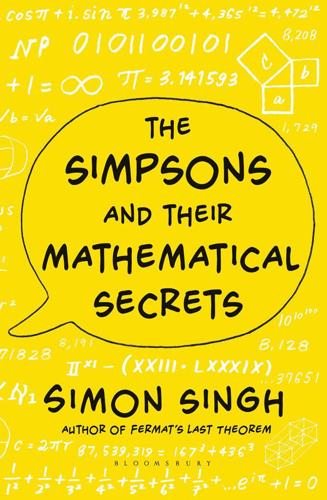
The Simpsons and Their Mathematical Secrets
by
Simon Singh
Published 29 Oct 2013
Via one chain or another, Erdős can be connected to almost any mathematician in the world, regardless of their field of research. Take Grace Hopper (1906–92) for example. She built the first compiler for a computer programming language, inspired the development of the programming language COBOL, and popularized the term bug to describe a defect in a computer after finding a moth trapped in the Mark II computer at Harvard University. Hopper did much of her mathematics in industry or as a member of the United States Navy. Indeed, “Amazing” Grace Hopper was eventually promoted to rear admiral, and there is now a destroyer named the USS Hopper.

Dawn of the New Everything: Encounters With Reality and Virtual Reality
by
Jaron Lanier
Published 21 Nov 2017
Wouldn’t it make sense for VR software to be like that as well? Modeless?1 This was obvious from the start. So my compatriots and I had to reconsider the architecture of our software, starting with the most fundamental principles. Grace Back-and-forth mode swapping—between developing and running code—was mostly invented by Grace Hopper, the navy rear admiral and computer scientist who “codified” the core patterns for how software is still created today. “Source code” is the artifact we modify while in the caterpillar mode, when computer software is being created and edited. Such code is typically made of words from English plus other symbols, and it seems somewhat readable, as if it were a story about what the computer is supposed to do.
…
In that case, there will be various actions you can perform that cause the underlying bits to change so that the virtual world you are in will suddenly function differently. What might these actions be? Will you operate a simulated control panel that looks like the bridge of the Starship Enterprise? Or will you pull on chains in a medieval dungeon, or dance like a leaf? Or edit text that looks like the Grace Hopper–style source code everyone uses these days? Any and all of these editor designs might have a place. But there has to be some design. You can’t accomplish anything without embracing a point of view and a way of thinking. But there is no reason, fundamentally, to be inflexible about which design to use at a given time.
…
Such an editor could do anything a compiler could do, but as live visual tweaking.6 We played favorites with certain editor designs, meaning with certain visual representations of code, often preferring a principle called dataflow. Dataflow typically looks like wires connecting modules. But it wasn’t fundamental. We could swap in Grace Hopper text–like editors, or other editors. The experience of programming briefly became a little more improvisatory, a little more like a cross between playing jazz on a horn and drawing mathematical diagrams. * * * Fifty-second VR Definition: A way of using computers that suggests a rejection of the idea of code

Protocol: how control exists after decentralization
by
Alexander R. Galloway
Published 1 Apr 2004
Cyberfeminism adds a new dimension to the discussion begun in the previous sections on hackers and viruses, for this new strain deals with the negative space created within protocol through the injection of mutations, crashes, and viral code. With cyberfeminism, protocol becomes disturbed. Its course is altered and affected by the forces of randomness and corruption. Indeed it is possible to think of cyberfeminism itself as a type of virus, a bug within the larger protocological network. Sadie Plant and others have identified Grace Hopper as the discoverer of the first computer bug. The bug was quite literally that, a moth caught in the innards of an early computing machine. The moth disrupted the normal functioning of the machine. Henceforth the term bug has been used to describe logical mistakes or glitches in computer code. The computer bug, far from being an unwanted footnote in the history of computing, is in fact a space where some of the most interesting protocological 30.
…
Throughout Plant’s book the intersection of woman and the protocological matrix is primary. This materializes itself historically in the matrix-based weaving processes of industrial power looms, in the predominantly female operators of phone networks, in the trope of the woman as computer programmer (Ada Lovelace, Grace Hopper) and in the weblike structure of cyberspace. Because of this history, Plant writes that technology threatens phallic control and is fundamentally a process of emasculation. “The matrix weaves itself in a future which has no place for historical man,”39 says Plant. The digital provides a space of valences that exists outside of and potentially preempts patriarchal structures.
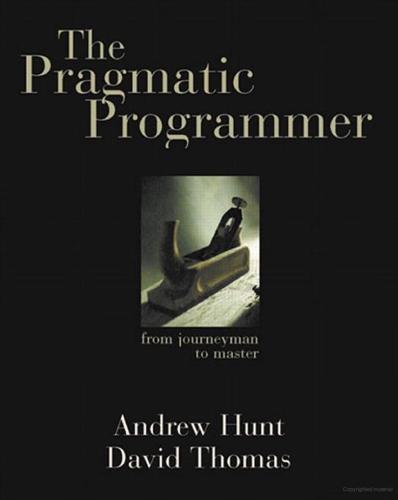
The Pragmatic Programmer
by
Andrew Hunt
and
Dave Thomas
Published 19 Oct 1999
Sit back and wait for them to start asking you to add the functionality you originally wanted. People find it easier to join an ongoing success. Show them a glimpse of the future and you'll get them to rally around.[1] [1] While doing this, you may be comforted by the line attributed to Rear Admiral Dr. Grace Hopper: "It's easier to ask forgiveness than it is to get permission." Tip 5 Be a Catalyst for Change The Villagers' Side On the other hand, the stone soup story is also about gentle and gradual deception. It's about focusing too tightly. The villagers think about the stones and forget about the rest of the world.
…
How do you make changes—does the project regulate access or arbitrate the inclusion of changes? 18. Debugging It is a painful thing To look at your own trouble and know That you yourself and no one else has made it • Sophocles, Ajax The word bug has been used to describe an "object of terror" ever since the fourteenth century. Rear Admiral Dr. Grace Hopper, the inventor of COBOL, is credited with observing the first computer bug—literally, a moth caught in a relay in an early computer system. When asked to explain why the machine wasn't behaving as intended, a technician reported that there was "a bug in the system," and dutifully taped it—wings and all—into the log book.
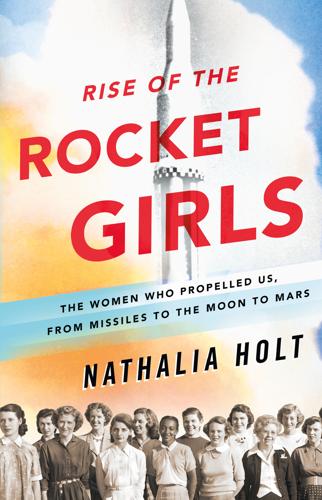
Rise of the Rocket Girls: The Women Who Propelled Us, From Missiles to the Moon to Mars
by
Nathalia Holt
Published 4 Apr 2016
They bought the pantsuits and wore them to the lab, feeling both beautiful and slightly scandalous. They had never worn slacks to work before. While trying out their new fashion-forward outfits, they were also debugging programs. A computer bug was a problem in the code. The term had been coined by Thomas Edison and then popularized by navy rear admiral Grace Hopper while she worked as a research fellow at Harvard University. On the evening of September 9, 1947, the operators of a Mark II computer at the university were having trouble with the machine. Upon investigating, they found a moth trapped in the relay points of a panel. They jokingly taped the dead insect in their lab notebook, noting “First actual case of bug being found.”
…
Birth control became available in 1960 in the United States, as described in James Reed, The Birth Control Movement and American Society: From Private Vice to Public Virtue (Princeton, NJ: Princeton University Press, 2014). A history of FORTRAN, along with descriptions of how early keypunch computers worked and the IBM 1620, can be found in Paul E. Ceruzzi, A History of Modern Computing, 2nd ed. (Cambridge, MA: MIT Press, 2003). Grace Murray Hopper’s story is told in her biography, Kathleen Broome Williams, Grace Hopper: Admiral of the Cyber Sea (Annapolis, MD: Naval Institute Press, 2013). Lois Haibt is quoted as saying, “Nobody knew anything,” etc., when asked about compilers, in Lois Haibt, an oral-history interview conducted August 2, 2001, by Janet Abbate, Institute of Electrical and Electronics Engineers History Center, Hoboken, NJ, U.S.A.

Recoding America: Why Government Is Failing in the Digital Age and How We Can Do Better
by
Jennifer Pahlka
Published 12 Jun 2023
The first programmable, electronic, general-purpose digital computer, the ENIAC, was built to calculate artillery firing tables for the US Army and then immediately used to study the feasibility of the hydrogen bomb, kicking off a long history of connections between the military and computing advances. The predecessor to COBOL, the computer language that still powers mainframes at California’s EDD and many other agencies, was developed by navy rear admiral Grace Hopper (who is also the source of the ever-useful phrase “it is easier to ask forgiveness than to get permission”). By the mid-1960s, the federal government purchased over 62 percent of the output of the entire US computer industry.1 The field of user experience design, the discipline most responsible for the ease of use (and occasional delight) provided by modern consumer software and web apps, also has its roots in the military.
…
A big reason for the lag is that our government spent the first several decades of the digital revolution treating tech systems like steel—as a commodity to be bought, not a capability to be developed. Instead, the capability that government has developed well, perhaps too well, is that of procurement. Our modern-day Grace Hoppers and Alphonse Chapanises are spending their days on paperwork instead of programming and design. Many of them find themselves having to follow Hopper’s advice to ask forgiveness instead of permission. We’ve been training our public servants to master procurement rules so complex and processes so drawn out that the technology they buy is outdated or irrelevant by the time it gets delivered.
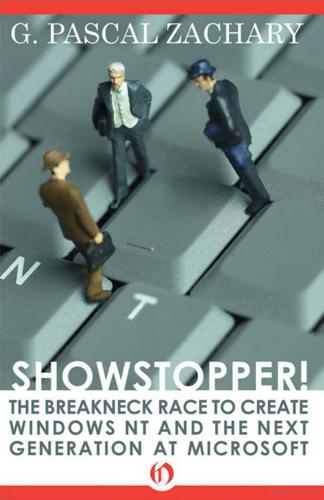
Showstopper!: The Breakneck Race to Create Windows NT and the Next Generation at Microsoft
by
G. Pascal Zachary
Published 1 Apr 2014
At the dawn of digital computing after World War II, when programming was still viewed as an unglamorous activity bordering on clerical work, male hardware engineers enlisted women to write code. By the early 1950s women had made a substantial contribution to the field. The pioneer in making it easier to program was a woman, Grace Hopper. But Hopper was sui generis; she was a role model who in a few short years became an anachronism. By the 1960s, programming was a hot field: Jobs were plentiful; salaries were high; men took over the field. By 1965, the year of Stowell’s birth, there was scant room for women in software. When several other women, including Smith, joined the project as part of the OS/2 migration in September 1990, Stowell saw her chance: Organize!
…
When several other women, including Smith, joined the project as part of the OS/2 migration in September 1990, Stowell saw her chance: Organize! She imagined an electronic forum. The company’s e-mail system supported dozens of so-called bulletin boards, on which a group of people could exchange ideas. Why not a bulletin board for women programmers—not only the ones in NT but elsewhere in the company? She would call it Hoppers, after Grace Hopper, her heroine. Other women warmed to the notion. Ellen Aycock, one of Microsoft’s first female programmers, was among the newcomers to NT. She quickly found Cutler and certain of his cohorts to be among “the most difficult people I’d ever worked with.” Their style, she discovered, was “total confrontation.
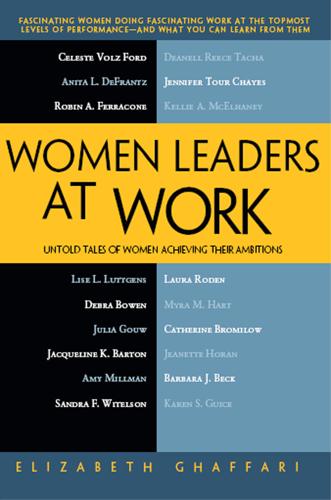
Women Leaders at Work: Untold Tales of Women Achieving Their Ambitions
by
Elizabeth Ghaffari
Published 5 Dec 2011
We realized we had lots of similarities—it was just uncanny the number of similar things we had done over the years or our shared reactions to things. Now, she tells people that I am her sister. We became and continue to be very good friends. She introduced me to the Anita Borg2 people. At first, I didn't understand why I should go to the conferences that they ran, so Maria basically dragged me kicking and screaming to a Grace Hopper Celebration of Women in Computing event. After that, I discovered I liked them and became very involved. I've sat on various committees for them and have done other things with them over the years. Ghaffari: What made you decide to head back to the East Coast to found the New England research center—Microsoft East?
…
I though there needed to be a combination of the mathematical and socials sciences, and also with design—considering design as an academic as well as applied discipline. __________ 2 Anita Borg was an American computer scientist who founded the Anita Borg Institute for Women and Technology, one of largest groups advocating for women in technology and engineering. The Institute runs the annual Grace Hopper Conference, which brings together thousands of women technologists. I knew very little about these other areas of inquiry. I started to do a little bit of work in economics and thought about trying to build an economics group in Redmond. I became frustrated because I talked to some of the top economists in the world, and they didn't seem interested in relocating to Redmond, whereas I had been able to get some of the top mathematicians in the world when I started a mathematics group.

From Airline Reservations to Sonic the Hedgehog: A History of the Software Industry
by
Martin Campbell-Kelly
Published 15 Jan 2003
The crucial breakthrough in programmer productivity was the development of programming languages in the second half of the 1950s.16 In a programming language, a single line of code could generate several machine instructions, improving productivity by a factor of 5 or 10. Unfortunately, early programming languages were so inefficient that gains in programmer productivity were squandered by inordinate translation times and long, inefficient programs. For example, at Univac, Grace Hopper, the doyenne of automatic programming, had developed a system called the “A-0 Compiler” in 1952, but programs could take as long as an hour to translate and were chronically inefficient. There were many similar academic and research laboratory developments.17 The most important early development in programming languages was FORTRAN for the IBM 704.18 The FORTRAN project took place in IBM’s Technical Computing Bureau under the leadership of John Backus, a 29year-old mathematician and programmer.
…
Users made software investments of tens of millions of lines of FORTRAN code, and when selecting a new computer—whether from IBM or another manufacturer—they needed a compatible FORTRAN system to protect their software investment, and also to share programs with others. (Though FORTRAN was the de facto standard for scientific programming, the data processing language COBOL later became an officially sanctioned standard.) Data processing compilers for business applications came onto the scene a year or two after scientific programming systems. In 1956, Grace Hopper’s Univac programming group established an early lead with its B-0 compiler (subsequently branded as FLOW-MATIC).21 The Univac compiler was a strong influence on the two other major business languages of the 1950s, IBM’s Commercial Translator, COMTRAN, and Honeywell’s FACT, begun in 1957 and 1959 respectively.

Smart Cities: Big Data, Civic Hackers, and the Quest for a New Utopia
by
Anthony M. Townsend
Published 29 Sep 2013
Tearing open the primitive electromechanical computer, they found a moth trapped between one of its relays. On a website maintained by Navy historians, you can still see a photograph of the page from the lab notebook where someone carefully taped the moth down, methodically adding an annotation: “First actual case of bug being found.”4 As legend has it, that person was Grace Hopper, a programmer who would go on to become an important leader in computer science. (Hopper’s biographer, however, disputes this was the first time “bug” was used to describe a malfunction in the early development of computers, arguing “it was clear the term was already in use.”)5 Since that day, bugs have become endemic in our digital world, the result of the enormous complexity and ruthless pace of modern engineering.
…
Hughes, American Genesis: A History of the American Genius for Invention (New York: Penguin Books, 1989), 75. 3William Maver Jr. and Minor M. Davis, The Quadruplex (New York: W. J. Johnston, 1890), 84. 4http://www.history.navy.mil/photos/images/h96000/h96566k.jpg. 5Kathleen Broome Williams, Grace Hopper: Admiral of the Cyber Sea (Annapolis, MD: Naval Institute Press, 2004), 54. 6“Surge Caused Fire in Rail Car,” Washington Times, last modified April 12, 2007, http://www.washingtontimes.com/news/2007/apr/12/20070412-104206-9871r/. 7“About recent service interruptions, what we’re doing to prevent similar problems in the future,” Bay Area Rapid Transit District, last modified April 5, 2006, http://www.bart.gov/news/articles/2006/news20060405.aspx. 8“The Economic Impact of Interrupted Service,” 2010 U.S.
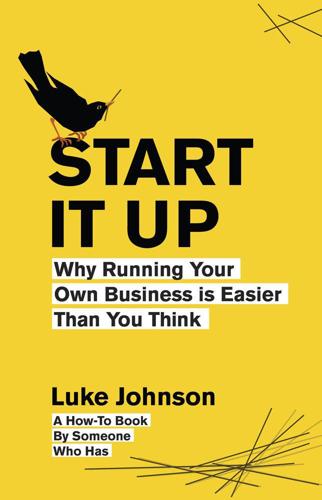
Start It Up: Why Running Your Own Business Is Easier Than You Think
by
Luke Johnson
Published 31 Aug 2011
But women are frequently more organized and efficient than men, and invention demands a systematic approach to discovery. And so it should come as no surprise that essential breakthroughs have been pioneered by women, despite many deterrents put in their way. Their stories serve as inspiration for any entrepreneur. Astoundingly, the first business computer software program was devised by a woman. Grace Hopper trained as a mathematician and was working at Sperry Corporation when she developed COBOL, a compiler language still in use today. Throughout her life she broke barriers inhibiting women’s progress in the workplace. She ended her career when she retired from the US Navy as a rear admiral in 1985 aged seventy-nine – the oldest person on active duty.

CIOs at Work
by
Ed Yourdon
Published 19 Jul 2011
Umm, they never really let you know what kind of work she did, but she was independent in the sense that she had her own apartment in New York City and, you know, she seemed to be having a lot of fun and she was really cute. So, it’s a joke, but the truth is, not only were there not any women in IT, I mean, I heard early about Grace Hopper, but I never met her, and there were no professional women, certainly not somebody with a title like a senior vice president that I ever met. And for probably the first two thirds of my career, umm, I didn’t know very many women executives, and if I did, they were at a very large distance, so there was no model.
…
Index A AdKnow ledge, Inc., 87 Agile development methodology, 62 Amazon, 314, 319 America COMPETES Act, 304 American Airlines, 47, 72 American Defense Department, 84 American Marketing Society, 113 American Production Inventory Control Society, 211 Ames, 320 AMR Corp, 47 Android, 43 Annapolis, 340 Apple, 97, 101, 217, 242, 295 Computer, 35 Genius Bar, 8 Archipelago Holdings Inc., 87 Arizona Public Service (APS) Company, 66, 211, 223 Arizona State University, 227 ARPANET, 19, 117, 135 Art of Computer Programming, 2 Atlanta-based Southern Company, 191 AT&T, 191, 249 B Ballmer, Steve, 39 Bank of Boston, 47 Baylor-Grapevine Board of Trustees, 47 Bedrock foundation, 249 Bell Atlantic Mobile, 231 Bell Labs, 2, 249 BlackBerry, 60, 96, 116, 121, 171, 184, 246, 261, 296, 317 Blalock, Becky, 182, 191, 215 adaptability, 192 Air Force brat, 191, 192 Atlanta-based Southern Company, 191 banking industry, 203 Boucher, Marie, 196 brainstorm, 202 24/7 business, 199 business intelligence, 204 cloud computing, 205 cognitive surplus, 206 cognitive time, 206 Coker, Dave, 196 communication and education, 200 Community and Economic Development, 194 consumer market, 202 cybersecurity, 207, 209 data analytics, 204, 205 disaster recovery, 209 distributed generation, 204 distribution organization, 201 Egypt revolution, 198 farming technology, 206 finance backgrounds/marketing, 200, 209 Franklin, Alan, 193 Georgia Power, 191 Georgia Power Management Council, 193 global society, 206 Google, 198 incredible technology, 195 Industrial Age, 206 Information Age, 206 InformationWeek's, 196 infrastructure, 202 intellectual property, 196 intelligence and redundancy, 207 Internet, 198, 206 leapfrog innovations, 205 mainframe system, 207 marketing and customer service, 193, 200 MBA, finance, 192 microfiche, 207 microwave tower, 207 mobile devices, 203 mobility and business analytics, 205 Moore's Law, 205 new generation digital natives, 197 flexible and adaptable, 199 innovation and creativity, 199 superficial fashion, 198 Olympic sponsor, 193 out pushing technology, 202 reinforcement, 201 sense of integrity, 200 Southern Company, 194, 198, 201, 207 teamwork survey, 201 technology lab, 202 undergraduate degree, marketing, 192 virtualization, 205 VRU, 203 Ward, Eileen, 196 wire business, 201 world-class customer service, 203 Bohlen, Ken, 211 American Production Inventory Control Society, 211 Apple, 217 APS, 211, 223 ASU, 227 benchmarking company, 216 chief innovation officer, 229 Citrix, 217 cloud computing, 218, 219 cognitive surplus, 220 DECnet, 212 Department of Defense, 222 distributed computing, 217 energy industry, 214 gizmo/whiz-bang show, 216 GoodLink, 217 hard-line manufacturing, 218 home computing, 219 home entertainment, 219 Honeywell, 219 HR generalists, 215 information technology department, 211 Intel machines, 217 John Deere, 213 just say yes program, 223 Lean Six Sigma improvement process, 211 Linux, 220 MBA program, 214 mentors, 213 national alerts, 224 North American universities, 228 paradigm shifts, 218, 220 PDP minicomputers, 212 Peopleware, 226 prefigurative culture, 221 R&D companies, 218 Rhode Island, 226 role models, 213 San Diego Fire Department, 224 security/privacy issues, 217 skip levels, 223 smart home concepts, 219 smartphone, 217 social media, 225 Stead, Jerry, 214 Stevie Award, 211 Storefront engineering, 212 traditional management, 219, 226 Twitter, 224 vocabulary, 221 Waterloo operations, 213 Web 2.0 companies, 227 Web infrastructure, 215 wikipedia, 220 Y2K, 222 Botnets, 23 Brian's and Rob Pike's, 2 Bristol-Myers Squibb, 33 Broadband networks, 241 Brown, 227 Bryant, 227 BT Global Services, 253 BT Innovate & Design (BTI&D), 253 Bumblebee tuna, 130 C Career writing technology, 67 CASE tools, 232 Cash, Jim, 50 Christensen, Clyde, 212 Chrome, 14, 18 Chrysler Corporation, 175 Citibank, 337 Citicorp, 313 Citrix, 217 Client-server-type applications, 59 Cloud computing, 218, 219, 239, 240, 261, 262, 310, 311, 313 Cloud technology, 62 CNN, 54 COBOL, 250 Cognitive surplus, 20, 79, 206, 291 College of Engineering, University of Miami, 113 Columbia University, 1 Community and Economic Development, 194 Computer Sciences Corporation, 35 Computerworld magazine, 196 Consumer-oriented technology, 22 Content management system, 133 Corporate information management (CIM) program, 309 Corporate Management Information Systems, 87 Corvus disk drive, 36 Customer Advisory Boards of Oracle, 191 Customer-relationship management (CRM), 56 Cutter Business Technology Council, 173 D Dallas Children's Medical Center Development Board, 48 DARPA, 19 DDoS attacks and security, 81 DECnet, 212 Dell Platinum Council, 113 DeMarco, Tom, 16, 226 Department of Defense, 222, 329, 332 Detroit Energy, 252 Digital books, 30 Digital Equipment, 48 Distributed computing, 217 Dodge, 189 Dogfooding, 11, 37, 38, 236 DTE Energy, 173 DuPont Dow Elastomers, 151 E Educational Testing Service (ETS), 151 E-government, 282, 285 Electrical distribution grid, 182 Elementary and Secondary Education Strategic Business Unit, 151 Elements of Programming Style, 2 Ellyn, Lynne, 173 advanced technology software planning, 175 Amazon, 184 artificial intelligence group, 175 Association for Women in Computing, 173 benchmark, 180, 181 BlackBerries, 184 Burns, Ursula, 175 Chrysler, 176 Cisco, 186 cloud computing, 183, 184 component-based architecture, 186 corporate communications customer service, 185 Crain's Detroit Business, 173 cyber security threats, 177 degree of competence, 187 diversity and sophistication, 182 DTE Energy, 173 energy trading, 176 engineering and science programs, 188 enterprise business systems policy, 186 executive MBA program, 176 Facebook, 185 fresh-out-of-the-university, 187 General Electric, 174 Google, 184 Grace Hopper, 174 grid re-automation, 182 Henry Ford Hospital, 174 internal social media, 185 International Coaching Federation, 178 iPads, 184 IP electrical grids, 182 iPod applications, 182 IT budgets, 186 IT responsibilities, 176 Java, 186 level of sophistication, 179 lobbying efforts, 181 medical computing, 175 Miller, Joan, 174 Mulcahey, Anne, 175 Netscape, 175 neuroscience leadership, 189 object-oriented programming, 186 Oracle, 186 peer-level people, 179 people system, 177 policies and strategies, 180 Radio Shack, 180 remote access capacity, 189 security tool and patch, 183 sense of community, 180 Shipley, Jim, 174 smart grid, 177, 182 smart meters, 182 smart phone applications, 183 swarming, 179 technical competence, 178, 179 Thomas, Marlo, 174 Twitter, 185 UNITE, 181 vendor community, 186 virtualization, 183, 184 Xerox, 175 E-mail, 9 Employee-relationship management (ERM), 56 Encyclopedia, 115 Encyclopedia Britannica, 292 ERP, 123 F Facebook, 244 Ellyn, Lynne, 185 Sridhara, Mittu, 73, 84 Temares, Lewis, 116, 121, 131 Wakeman, Dan, 169 Federal information technology investments, 299 Flex, 236 Ford, 102 Ford, Monte, 47 agile computing, 59 agile development, 62, 66 airplanes, 51 American Airlines, 47 Arizona Public Services, 66 Bank of Boston, 47 Baylor-Grapevine Board of Trustees, 47 BlackBerry, 60 board of Chubb, 51 board of Tandy, 51 business organizations, 63 business school, dean, 50 career writing technology, 67 client-server-type applications, 59 cloud technology, 62 CNN, 54 common-sense functionality, 49 consumer-based technology, 60 CRM, 56 Dallas Children's Medical Center Development Board, 48 Digital Equipment, 48 ERM, 56 financial expert, 69 frequent-flier program, 57 frontal lobotomy, 57 Harvard Business Review, 50 HR policies, 65 IBM, 48 information technology, 47, 52 Internet, 54 Internet-based protocol, 59 iPhone, 52 IT stuff, 58 Knight Ridder, 51 legacy apps, 59 mainframe-like applications, 59 management training program, 64 marketing and technical jobs, 48 Maynard, Massachusetts mill, 48 MBA program, 50 mentors, 49 Microsoft, 50 mobile computing, 62 New York Times, 53 operations center, 54 PDP-5, 49 PDP-6, 49 Radio Shack, 51 revenue management, 57 role models, 49 security paradigms, 62 self-service machine, 57 Silicon Valley companies, 68 smartphones, 54 social networking, 51, 53, 56, 58 stateful applications, 59 techie department, 48 The Associates First Capital Corporation, 47 transmission and distribution companies, 47 wireless network, 59 YouTube, 65 Fort Worth, 226 Free software foundation, 19 Fried, Benjamin, 1, 241 agile development, 25 agile methodologies, 26 Apple Genius Bar, 8 ARPANET, 19 Art of Computer Programming, 2 Bell Labs, 2 books and records, accuracy, 25 botnets, 23 Brian's and Rob Pike's, 2 cash-like principles, 29 CFO, 4 check writers, 18 chrome, 14, 18 classic computer science text, 1 cognitive surplus, 20 Columbia University, 1 compensation management, 7 competitive advantage, 9, 18 computer science degree, 1 computer scientists, 6 consumer-driven computing, 12 consumer-driven software-as-a-service offerings, 12 consumer-driven technology, 12 consumer-oriented technology, 14, 22 corporate leadership, 25 cost centers, 4 DARPA, 19 decision makers, 17 decision making, 13 360-degree performance management, 7 detroit energy, 30 digital books, 30 document workbench, 2 dogfooding, 11 e-books, 29 Elements of Programming Style, 2 e-mail, 9 end-user support, 7 engineering executive group, 4 European vendors, 6 file servers and print servers, 17 Folger Library editions, 30 free software foundation, 19 German company, 13 German engineering, 13 Gmail, 15 Godot, 26 Google, 1 books, 29 products, 5, 10 software engineers, 6 hiring managers, 6 HR processes and technologies, 6 IBM model, 13 instant messaging, 9 Internet age, 6 interviewers, training, 6 iPad, 29 iPhone, 29 IPO, 3 IT, engineering and computer science parts, 4 Knuth's books, 2 Linux machine, 8 Linux software, 19 machine running Windows, 8 Macintosh, 8 Mac OS, 9 macro factors, 11 Managing Director, 1 mentors, 1 microcomputers, 18 Microsoft, 5 Minds for Sale, 20 Morgan Stanley, 1–3, 5, 16 nonacademic UNIX license, 2 nontechnical skills, 5 oil exploration office, 17 open-source phone operating system, 20 outlook, 15 PARC, 19 performance review cycles, 7 personal computer equipment, 15 post-Sarbanes-Oxley world, 25 project manager, 13 quants, 24 rapid-release cycle, 26 R&D cycle, 24 regression testing, 27 role models, 1 shrink-wrapped software, 14 signature-based anti-virus, 22 smartphone, 20, 27 social contract, 8 society trails technology, 21 software engineering tool, 13 software installation, 14 supply chain and inventory and asset management, 10 SVP, 4 telephony, 17 ten things, 13 TMRC, 19 TROFF, 2 typesetter workbench, 2 UI designer, 14 university computing center, 28 videoconferencing, 12 Visicalc, 24 Wall Street, 23 Walmart, 6 waterfall approach, 25 XYZ widget company, 5 YouTube video, 20 G Gates, Bill, 39, 50 General Electric, 134 General Foods, 309, 326–328 General Motors, 33, 321, 329, 332 George Mason School of Information Technology, 309 Georgia Power Company, 191–193, 196 Georgia Power Management Council, 193 German company, 13 German engineering, 13 German manufacturing company, 232 Gizmo/whiz-bang show, 216 Gmail, 15 GoodLink, 217 Google, 1, 84, 85, 117, 217, 219, 220, 222, 235, 241, 263, 302, 319 apps, 314 books, 29 commercial products, 10 model, 293 Government Accountability Office (GAO), 305 4G program, 250 4G smartphone, 235 GTE, 231 Gupta, Ashish aspiration, organization, 256 bandwidth and network infrastructure, 267 BlackBerry, 261 business and customer outcomes, 274 capital investment forums, 269 career progression, 255 cloud-based shared infrastructure model, 263 cloud computing, 261, 262 collaboration, 272 communications infrastructure, 258 compute-utility-based model, 262 control and integrity, 268 core competency, 255 core network infrastructure, 267 core strengths, 256 cost per unit of bandwidth, 267 customer demands, 268 data protection, 261, 262 decision-making bodies, 269 demographics, 272, 273 device convergence, 263 dogfooding, 259 employee flexibility, 260, 264 engagement and governance, 269 enterprise market segment, 261 equipment management, 260 executive MBA, 256 fourth-generation LTE networks, 267 functional service departments, 270 Global Services, distributed organization, 257 Google, 263, 275 Google Apps, 266 handheld devices, 265 hastily formed networks, 258 IMF, 266 innovation and application development, 265 iPad, 257, 260, 261, 266,267 iPhone, 266 Japan, 257, 258 London Business School, 253 management functions, 257 management sales functions, 257 market segments, 259 MBA, General Management, 253 measurements, 271 messaging with voice capability, 264 mini-microcomputer model, 261 mobile communications network, 258 mobile-enabling voice, 259 mobile phone network, 260 mobile traffic explosion, 265 network infrastructures, 265 network IT services, 254 network quality, 257 new generation digital natives, 271 disadvantages, 273 Google, 273 opportunities, 273 Olympics, 263 opportunities, 275 organizational construct, 272 outsourced network IT services, 259 outsourcing, 271 per-use-based model, 262 portfolio and business alignment, 274 Portfolio & Service Design (P&SD), 253 primary marketing thrust, 264 product development thrust, 264 product management team, 259 project and program management, 255 resource balance, 270 scalability, 262 security, 262 Selley, Clive, 254, 255 service delivery organization, 254 single-device model, 264 smart devices, 267 smart phones, 266 telecommunications capability, 259 upward-based apps, 264 virtualization, 261 voice-over-IP connections, 258 Windows platform, 261 Gurnani, Roger, 231 accounting/finance department, 233 analog cellular networks, 250 AT&T, 249 bedrock foundation, 249 Bell Atlantic Mobile, 231 Bell Labs, 249 blogs, 244 broadband networks, 241 business benefits, 237 business device, 240 business executives, 238 business leaders, 248, 249 business relationship management, 248 buzzword, 239 CASE tools, 232 cloud computing, 239, 240 COBOL, 250 consumer and business products, 231 consumer electronics devices, 241 consumer telecom business, 233 customer-engagement channel, 244 customer forums, 244 customer support operations, 251 customer-touching channels, 236 degree of control, 246 distribution channel, 250 dogfooding, 236 ecosystem, 243, 249 enterprise business, 233 ERP systems, 236 face-to-face communications, 244 FiOS product, 235 flex, 236 "follow the sun" model, 239 German manufacturing company, 232 4G program, 250 4G smartphone, 235 hardware/software vendors, 247 information assets, 245 information technology strategy, 231 intellectual property rights, 244 Internet, 235, 239 iPhone, 243 Ivan, 232 Lowell, 232 LTE technology-based smartphone, 235 marketing, 251 MIT, 246 mobile technology, 234 Moore's law, 242 MP3 file, 235 network-based services, 240 Nynex Mobile, 233 P&L responsibility, 251 PDA, 238 personal computing, 235 product development, 234, 251 role models, 232 sales channels, 251 smartphones, 238 state-level regulatory issues, 251 state-of-the-art networks, 243 telecom career, 232 telephone company, Phoenix, 234 Verizon Communication, 231, 232 virtual corporations, 241 Web 2.0, 244 Williams Companies, 232, 233 WillTell, 233 wireless business, 233 H Hackers, 19 Harmon, Jay, 213 Harvard Business Review, 50 Harvard Business School, 331 Heller, Martha, 171 Henry Ford Hospital, 174 Hewlett-Packard piece, 129 Home computing, 219 Honda, 102 Honeywell, 219 Houghton Mifflin, 134, 136 I IBM, 48, 250 manpower, 311 model, 13 Indian IT outsourcing company, 255 Information technology, 52 Intel machines, 217 International Coaching Federation, 178 Internet, 9, 44, 54, 117, 235, 239, 316, 322 Internet-based protocol, 59 Interoperability, 341 iPads, 2, 94, 97, 184, 257, 260, 264, 267, 288, 289, 295, 296 IP electrical grids, 182 iPhones, 43, 52, 96, 101, 170, 181, 260, 264,296 iPod, 101 IT lifecycle management process, 37 Ivan, 232 J John Deere, 213 K Kansas, 226 Kernigan, Brian, 2 Knight Ridder, 51 Knuth, Donald, 2, 29 Kraft Foods Inc, 309 Krist, Nicholas, 28 Kundra, Vivek Clever Commute, 305 cognitive surplus, 303 command and control systems, 301 consumerization, 302 consumption-based model, 300 cyber-warfare, 301 Darwinian pressure, 302 desktop core configuration, 306 digital-borne content, 301 digital oil, 300, 307 digital public square, 304 enterprise software, 303 entrepreneurial startup model, 306 frugal engineering, 306 Google, 302 government business, 302 innovator's dilemma, 307 iPad, 302 IT dashboard, 302 leapfrog technology, 306 massive consumerization, 301 megatrends, 301 parameter security, 302 Patent Office, 305 pharmaceutical industry, 304 phishing attacks, 301 policy and strategic planning, 299 security and privacy, 301 server utilization, 300 social media and technology, 300, 306 storage utilization, 300 Trademark Office, 305 Wikipedia, 303 L LAN, 259 Lean Six Sigma improvement process, 211 Levy, Steven (Hackers), 19 Linux, 220 machine, 8 open-source software, 19 Lister, Tim, 226 London Business School, 73, 253, 256 Long-term evolution (LTE), 235 Lowell, 232 M MacArthur's intelligence officer, 327 Macintosh, 8 Mainframe computers, 118 Mainframe-like applications, 59 Marriott's Great America, 35 McDade, 327 McGraw-Hill Education, 133, 147, 150 Mead, Margaret, 221 Mendel, 311 Microcomputers, 18 Microsoft Corporation, 5, 11, 33, 36, 38, 41, 44, 46, 50, 156, 217, 223, 236, 250, 293 Microsoft Higher Education Advisory Group, 113 Microsoft's operational enterprise risk management, 33 Middlesex University, 189 Miller, Joan Apple products, 295 authority and accuracy, 292 award-winning ICT programs and services, 277 back locked-down information, 289 big-scale text issues, 294 big-time computing, 279 BlackBerry, 296 business management training, 281 business skills, 281 central government, 283 cognitive surplus, 291 community care project, 278 community development programs, 277, 278 computers, constituency office, 294 confidential information, 284 data management, 281 decision making, 286 democratic process, 288 economics degree, 278 e-government, 282, 285 electronic communication, 289 electronic-enabled public voice, 286 electronic information, 288 electronic media, 286 electronic records, 280, 284 electronic services, 294 e-mail, 289, 290, 295 forgiving technology, 296 front-office service, 282, 283 Google, 292 Google's cloud service, 290 Government 2, 287 Health and Social Care, 284 House business, 294 House of Lords, 288 ICT strategy, 289, 290 information management, 278 insurance company, 278 Internet information, 285 iPad, 288, 289, 296 IT data management, 279 management principle, 280 local government, 283 mainframe environment, 289 member-led activity, 287 messages, 289 Microsoft, 293 Microsoft's cloud service, 290 mobile electronic information, 284 mobile technology, 289 national organization, 284 network perimeters, 290 official government information, 285 on-the-job training, 281 organizational planning, 278 Parliamentary ICT, 277 project management, 279 public sector, 282 public transportation, 285 quango-type organizations, 283 representational democracy, 286 security, 290, 291 social care organization, 279 social care services, Essex, 278 social care systems, 284 social networking, 285 sovereignty, 291 sustainability and growth, 293 technical language, 294 technology skills, 281 transactional services, 285 transferability, 291 Web-based services, 285 Wikipedia, 291, 292 X-factor, 286 Minds for Sale, 20 Mitchell & Co, 333 MIT Media Labs, 149 Mobile computing, 62 Mobile technology, 234 Mooney, Mark, 133 artificial intelligence, 134 back-office legacy, 136 balancing standpoint, 145 BBC, 140 Bermuda Triangle, 135 BlackBerry shop, 142 Bureau of National Standards, 136 business model, 140 career spectrum, 144 cloud computing, 148 competitive intelligence and knowledge, 143 Connect, 141 customer-facing and product development, 135 customer-facing product space, 137 customer space and product development, 136 digital products development, 144 digital space and product, 146 educational and reference content, 139 educational products, 141 entrepreneur, 150 General Electric, 134 GradeGuru, 140 handheld devices, 142 hard-core technical standpoint, 146 hardware servers, 142 Houghton Mifflin, 134, 136 HTML, 138 industrial-strength product, 141 intellectual content, 148 Internet, 148 iPad, 138, 139, 142 iPhone, 142, 143 iTunes, 138 Klein, Joel, 147 learning management systems, 137 long-term production system, 141 Marine Corps, 134 McGraw-Hill Education, 133, 147 media development, 144 media space, 138, 142 mobile computing, 139 MOUSE, 150 online technology, 138 open-source capabilities, 142 Oracle quota-management system, 143 people's roles and responsibilities, 137 Phoenix, 149 product development, 149 publishing companies, 142 publishing systems, 137 Reed Elsevier, 133, 136 Salesforce.com, 144, 149 scalability testing, 145 senior business leaders, 146 social network, 148 soft discipline guidelines, 141 solar energy, 149 Strassmann, Paul, 135 technical skill set, 143, 144 testing systems integration, 145 The Shallows, 139 transactional systems, 142 trust and integrity, 145 TTS, QuickPro, and ACL, 144 Vivendi Universal, 134 War and Peace today, 139 Moore's law, 242 Morgan Stanley, 2, 3, 16 N NASA, 309, 333, 334 National Institute of Standards and Technology (NIST), 173 Naval Postgraduate School, 134 Netscape, 175 New Brunswick model, 282 News Corp., 147 New York Stock Exchange (NYSE), 87, 116, 223, 278 New York Times, 53 North American universities, 228 NSA/CIA software, 134 Nynex Mobile, 233 O Oil exploration office, 17 Open-source phone operating system, 20 Outlook, 15 P Pacer Software, 135 Paradigm shifts, 218, 220 Parks and Recreation Department, 126 PDP minicomputers, 212 Peopleware, 226 Personal computing, 235 Personal digital assistant (PDA), 238 Petri dish, 44 Phoenix, 211 Plauger, Bill, 2 Q Quants, 24 R Radio Shack, 51 Reed Elsevier, 133, 136 Reed, John, 335 Rubinow, Steve, 87 AdKnowledge, Inc., 87 agile development, 110 Agile Manifesto, 110 Archipelago Holdings Inc., 87 attributes, 108 capital market community, 91 cash/actual trading business, 88 channel marketing departments, 92 cloud computing, 97 CNBC, 89 collaborative technology, 95 collective intelligence, 95 communication skills, 102, 106 conference organizations, 99 consumer marketplace, 94 data center, 90 decision making, 105, 108 economy standpoint, 100 e-mail, 100 Fidelity Investments, 105 financial services, 92 IEEE, 101 innovative impression, 94 Internet, 98 iPad, 97 iPod device, 91 labor laws, 110 listening skills, 106 logical progression, 104 Mac, 96 mainframe, 104 management and leadership, 104, 105 market data system, 89 micro-second response time, 89 mobile applications, 94 multidisciplinary approach, 103 multimedia, 97 multi-national projects, 110 multiprocessing options, 99 network operating system, 103 NYSE Euronext, 87 open outside system, 88 parallel programming models, 99 personal satisfaction, 109 PR function, 106 proclaimed workaholic, 109 real estate business, 88 regulatory and security standpoint, 96 Rolodex, 94 Rubin, Howard, 99 server department, 97 software development, 89 sophisticated technology, 101 technology business, 88 technology integration, 91 trading engines, 90 typewriter ribbon, 94 virtualization, 98 Windows 7, 96 younger generation video games, 93 visual interfaces, 93 Rumsfeld, Donald, 222 S San Diego Fire Department, 224 Santa Clara University, 36 SAS programs, 131 Scott, Tony, 10, 33, 236 Android, 43 Apple Computer, 35 architectural flaw, 44 BASIC and Pascal, 35 Bristol-Myers Squibb, 33 Bunch, Rick (role model), 34 business groups, 42 COO, 39 Corporate Vice President, 33 Corvus disk drive, 36 CSC, 35 Defense department, 45 dogfooding, 37, 38 games and arcades, 35 General Motors, 33 IBM's role, 37 information systems management, 36 integrity factor, 40 Internet, 44 iPhone, 43 IT lifecycle management process, 37 leadership capability, 40 leisure studies, 34 macro-architectural threats, 44 Marriott's Great America, 35 math models, 36 Microsoft Corporation, 33, 36, 38, 41, 44, 46 Microsoft's operational enterprise risk management, 33 parks and recreation, 34 Petri dish, 44 playground leader, 42 product groups, 42 quality and business excellence team, 33 Santa Clara University, 36 Senior Vice President, 33 smartphone, 43 social computing, 38 Sun Microsystems, 36 theme park industry, 35 University of Illinois, 34 University of San Francisco, 36 value-added business, 33 Walt Disney Company, 33 Senior Leadership Technology and Product Marketing, 71 Shakespeare, 30 Shirky, Clay, 220 Sierra Ventures, 191 Silicon Valley companies, 68 Silicon Valley software factories, 323 Skype, 118 Smart Grid Advisory Committee, 177 Smartphones, 20, 27, 43, 54, 217, 238 Social care computer electronic record system, 279 Social computing, 38, 320 Social networking, 51, 53, 56, 58 Society trails technology, 21 SPSS programs, 131 Sridhara, Mittu, 71 Amazon, 76 American Airlines, 72 back-end computation and presentation, 80 banking, 77 B2B and B2C, 85 business/product departments, 82 business work context, 74 buzzword, 77 career aspiration, 73 career spans, 73 coders, 72 cognitive surplus, 79 competitive differentiation, 74 computing power, 78 contribution and energy, 85 convergence, 75 CPU cycles, 78 cross-channel digital business, 71 cultural and geographic implementation, 72 customer experience, 84, 85 customer profile, 76 data visualization, 79, 80 DDoS protection, 81 economies of scale, 77 elements of technology, 72 encryption, 82 end customer, 83 entertainment, 75 ERP system, 72 Facebook, 84 finance and accounting, 73 foster innovation and open culture, 81 friends/mentors/role models, 74 FSA, 76 gambling acts, 81 games, 79 gaming machines, 80 GDS, 72 global organization, 71 Google, 75, 84, 85 Group CIO, Ladbrokes PLC, 71 industry-standard technologies, 77 integrity and competence, 83 IT, 74, 82 KickOff app, 71 land-based casinos, 79 live streaming, 78 London Business School, 73 mobile computing, 78 multimedia, 84 new generation, 84 on-the-job training, 73 open-source computing, 79 opportunity, 80, 83 PCA-compliant, 81 personalization, 76 real-time systems, 74 re-evaluation, 81 reliability and availability, 77 security threats, 80 smart mobile device, 75 technology-intense customer, 85 top-line revenue, 74 trader apps, 82 true context, 73 underpinning business process, 76 virtualization, 78 Visa/MasterCard transactions, 78 Web 3.0 business, 76 web-emerging web channel, 76 Wikipedia, 79, 85 Word documents and e-mail, 82 work-life balance, 84 young body with high miles, 72 Zuckerberg, Mark, 73 Stead, Jerry, 214 Storefront engineering, 212 Strassmann, Paul, 228, 309 agile development, 340 Amazon EC2, 314 America information processors, 322 Annapolis, 340 AT&T, 332 backstabbing culture, 339 BlackBerry, 317 block houses, 319 CFO/CEO position, 337 CIM program, 309 Citibank, 337 Citicorp, 313, 339 cloud computing, 310, 311, 313 coding infrastructure, 341 communication infrastructure, 341 corporate information management, 329 Corporate Information Officer, 309 counterintelligence, 320 cyber-operations, 338 Dell server, 314 Department of Defense, 329, 332 Director of Defense Information, 309 employee-owned technology, 316 enterprise architecture, 316 exfiltration, 313 financial organizations, 320 firewalls and antiviruses, 312 General Foods, 309, 326–328 General Motors, 321, 329, 332 George Mason School of Information Technology, 309 Google apps, 314 government-supported activities, 326 Harvard Business School, 331 HR-related issues, 331 IBM manpower, 311 infiltration, 313 Internet, 316, 322 interoperability, 315, 317, 341 Kraft Foods Inc, 309 MacArthur's intelligence officer, 327 Machiavellian view, 327 mash-up, 316 military service, 331 NASA, 309, 333, 334 police department, economics, 312 powerpoint slides, 324 Radio Shack, 319 senior executive position, 334 service-oriented architecture, 316 Silicon Valley software factories, 323 social computing, 320 Strassmann's concentration camp, 318 structured methodologies, 342 U.S.

Computer: A History of the Information Machine
by
Martin Campbell-Kelly
and
Nathan Ensmenger
Published 29 Jul 2013
Although good for its kind, much of it is “internalist,” technical, and focused on narrow software genres, which makes it difficult for a nonexpert to get a foothold in the topic. An excellent starting point is Steve Lohr’s engaging biographically oriented Go To: The Story of the Programmers Who Created the Software Revolution (2001). Grace Murray Hopper’s role in promoting programming languages is well described in Kurt Beyer’s Grace Hopper and the Invention of the Information Age (2009). To try to bring some order to the history of the software field, a conference was organized in 2000 by the Heinz Nixdorf MuseumsForum, Paderborn, Germany, and the Charles Babbage Institute, University of Minnesota. The papers presented at the conference were published as History of Computing: Software Issues (Hashagen et al., eds., 2002).
…
The Man Behind the Microchip: Robert Noyce and the Invention of Silicon Valley. New York: Oxford University Press. Berners-Lee, Tim. 1999. Weaving the Web: The Past, Present, and Future of the World Wide Web by Its Inventor. London: Orion Business Books. Bernstein, Jeremy. 1981. The Analytical Engine. New York: Random House. Beyer, Kurt W. 2009. Grace Hopper and the Invention of the Information Age. Cambridge MA: MIT Press. Bliven, Bruce, Jr. 1954. The Wonderful Writing Machine. New York: Random House. Bosman, Julie. 2012. “After 244 Years, Encyclopaedia Britannica Stops the Presses.” New York Times, 13 March. Bowden, B. V., ed. 1953. Faster Than Thought.

Your Computer Is on Fire
by
Thomas S. Mullaney
,
Benjamin Peters
,
Mar Hicks
and
Kavita Philip
Published 9 Mar 2021
See, for example, the popular biographies of software industry personalities like Steve Jobs that fall into the “great man” history trope. Biographies of notable women in computing, like Grace Hopper, sometimes borrow from this style as well, switching great man narratives of success for “great woman” narratives. The ubiquity and popularity of such accounts gives the impression that individual actors are responsible for historical change, rather than foregrounding the complex actions of large masses of people. In general, they focus only on historical success stories as instructive. Walter Isaacson, Steve Jobs (New York: Simon & Schuster, 2011); Kurt Beyer, Grace Hopper and the Invention of the Information Age (Cambridge, MA: MIT Press, 2009). 36.
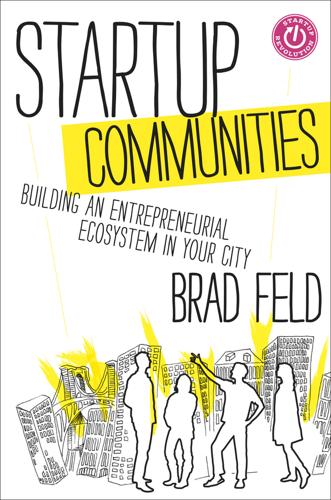
Startup Communities: Building an Entrepreneurial Ecosystem in Your City
by
Brad Feld
Published 8 Oct 2012
Reach out to formal and informal women’s groups: Male advocates stressed the importance of requesting invitations to technical women’s meetings, participating in women-in-tech groups, and making sure that other men, especially top leadership, attend as well. Men also described the benefits of sending male colleagues to conferences like the Grace Hopper Celebration of Women in Computing. —Lucy Sanders, NCWIT, @ncwit In 20 years, when I look back, I expect that the gender ratio in the startup community leadership will be roughly equal, but it’ll take another generation to get there. Race is more difficult because there are so few minorities in Boulder.
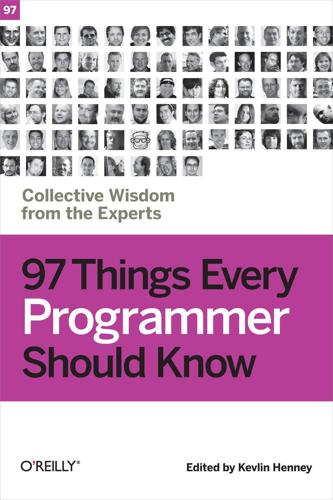
97 Things Every Programmer Should Know
by
Kevlin Henney
Published 5 Feb 2010
Programming is something some people do—some of the time. And the hard part—the thinking—is the least visible and least appreciated by the uninitiated. There have been many attempts to remove the need for this skilled thinking over the decades. One of the earliest and most memorable is the effort by Grace Hopper to make programming languages less cryptic—which some accounts predicted would remove the need for specialist programmers. The result (COBOL) has contributed to the income of many specialist programmers over subsequent decades. The persistent vision that software development can be simplified by removing programming is, to the programmer who understands what is involved, obviously naïve.

The Secret War Between Downloading and Uploading: Tales of the Computer as Culture Machine
by
Peter Lunenfeld
Published 31 Mar 2011
To get to a workable understanding of the history of the culture machine, we need to braid these three strands, looking at programmers, millionaires, and dreamers. That these strands can all combine 145 GENERATIONS in the story of one person, one machine, or even one company is all to the good. The Warriors: A Prehistory Life was simple before World War II. After that, we had systems. —Rear Admiral Grace Hopper The question to begin with is not, “What is a computer?,” but rather, “Who is a computer?,” because computers were humans first and machines second. Computers were people, usually women, who computed numbers, tabulated results, and published lists or matrices with the results. They worked for nineteenth- and early twentieth-century businesses and government ministries, and laid the groundwork for the data-driven, statistically charted, numerically marked world in which we now live.
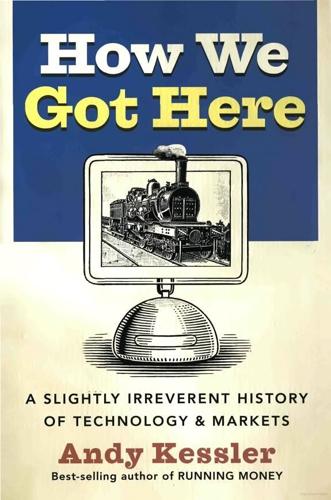
How We Got Here: A Slightly Irreverent History of Technology and Markets
by
Andy Kessler
Published 13 Jun 2005
It had 3300 relays and the rest was mechanical, but that didn’t stop the Bureau of Ships from co-opting the machine to compute firing tables. The Mark I had 750,000 parts, weighed five tons and could do three operations per second. It constantly broke down. The Mark II, III and IV would eventually be built. Grace Hopper was given the task of programming these machines. When trying to figure out why one of her programs didn’t work, she actually found a moth caught in one of the relays. No myth, she pasted the moth into the logbook of the Mark II (now at the Smithsonian). Hence the name computer bug. Aiken would remark in 1947 that he thought six computers would just about do it for all the computing needs of the United States.
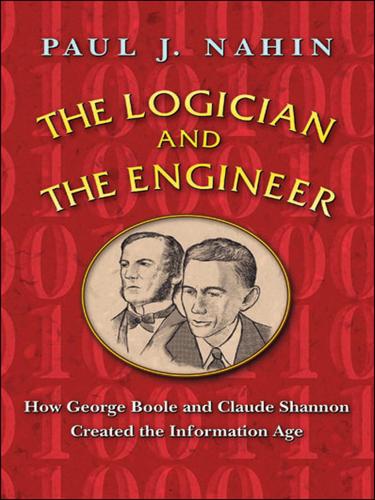
The Logician and the Engineer: How George Boole and Claude Shannon Created the Information Age
by
Paul J. Nahin
Published 27 Oct 2012
To clean up such a disabled relay was called debugging, a term that has survived in the vocabulary of modern computer users trying to fix their faulty programs. This is not a joke—I heard it as a quite serious story in a lecture at the Naval Postgraduate School in 1982 from a legend in computer science, Rear Admiral Grace Hopper (1906–1992), a Yale PhD mathematician who worked during the Second World War with Harvard’s five ton, 800 cubic foot Mark I relay computer, which when operating was described as sounding like a “roomful of ladies knitting.” To debug such a machine must have been an “interesting” job for someone; the successor to the Mark I—called, not surprisingly, the Mark II—had 13,000 relays.

Whistleblower: My Journey to Silicon Valley and Fight for Justice at Uber
by
Susan Fowler
Published 18 Feb 2020
I was smart, I was hardworking, I was engaged to the man of my dreams, and I could do just about anything I set my mind to. I deserved better than Uber, I deserved better than what Silicon Valley had given me, and I was ready for something more. But then, just when I’d made up my mind that I would leave, a glimmer of hope appeared. In mid-October, Uber had sponsored the Grace Hopper Conference. Many of the women from LadyEng had traveled to Houston for the conference, to staff the Uber booth and to recruit young women for software engineering positions. Uber’s CTO, Thuan Pham, was also in attendance. At a dinner during the conference, one of the women had told Thuan that there was a serious problem at Uber: managers within the engineering group had been giving their female employees low performance scores—and, in particularly egregious cases, changing their performance scores after the performance review cycle had ended—in order to keep their “diversity numbers” from falling.

Power and Progress: Our Thousand-Year Struggle Over Technology and Prosperity
by
Daron Acemoglu
and
Simon Johnson
Published 15 May 2023
They symbolized the values and attitudes that many computer scientists and entrepreneurs held, even when they did not share the hackers’ work and sanitary habits. The view that the future of computing and information lay with decentralization was not confined to the scruffy, male hackers of Tech Square at MIT and Berkeley. Another pioneer, Grace Hopper, was pushing for greater decentralization in computing at the Department of Defense in the 1970s. Hopper played an important role as a software innovator, devising early programming conventions that culminated in the new language COBOL. Hopper also viewed computing as a way of broadening access to information, and she influenced how computing was used in one of the largest organizations in the world, the US armed forces.
…
Any internet search will confirm that the Ted Nelson statement is widely attributed to him, without a confirmed source; and Leontief (1983), 405. Lee Felsenstein quoting Revolt in 2100, “Secrecy is the keystone…,” is from Levy (2010, 131). Ted Nelson, “THE PUBLIC DOES NOT…” and “THIS BOOK…,” are from Levy (2010, 144). Grace Hopper is discussed at length in Isaacson (2014, Chapter 3). A Reversal. US inequality trends are explored and discussed in Goldin and Margo (1992), Katz and Murphy (1992), Piketty and Saez (2003), Goldin and Katz (2008), and Autor and Dorn (2013). Our approach builds on Acemoglu and Autor (2011), Autor (2019), and Acemoglu and Restrepo (2022), which also provide related numbers.
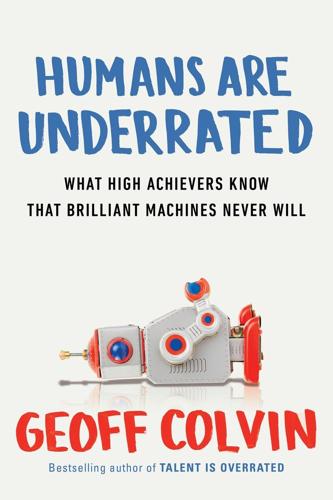
Humans Are Underrated: What High Achievers Know That Brilliant Machines Never Will
by
Geoff Colvin
Published 3 Aug 2015
Besides losing in competition with women, they are likely to lose disproportionately in competition with technology. This seems odd, considering that men, on average, are attracted to technology and have been, on average, the sex most responsible for the technology revolution. Of course, a number of computer pioneers were unsung women—Ada Lovelace, Grace Hopper, Jean Jennings, to name a few—who are only beginning to get the recognition they deserve. But it’s undeniable that the industry has been and remains dominated by men, a situation that many companies, schools, and governments worldwide are trying to remedy. Yet the surprising new trend is that for men in general, technology’s advance is becoming a problem.
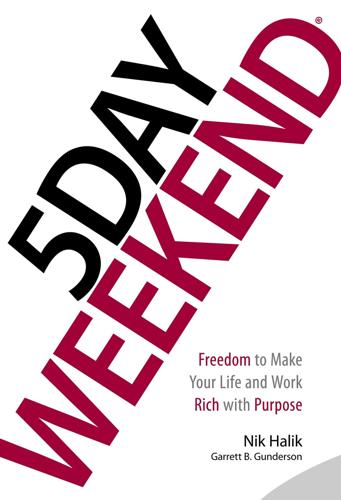
5 Day Weekend: Freedom to Make Your Life and Work Rich With Purpose
by
Nik Halik
and
Garrett B. Gunderson
Published 5 Mar 2018
The accumulation theory of investing (save money in tax-deferred vehicles and let it grow) will not create a 5 Day Weekend for you. Instead, consider cash-flowing investments as an alternative to what you’ve been taught. Focusing on cash flow is the path to true financial independence. “The most dangerous phrase in the language is ‘We’ve always done it this way.’ ” —GRACE HOPPER CHAPTER 21 SEASONS OF INVESTING Farmers know there is a season for everything. They plant in the spring, cultivate in the summer, harvest in the fall, and fields lay dormant in the winter. Economists are also familiar with seasons and cycles. There is a natural, measurable, and predictable ebb and flow to economic activity.
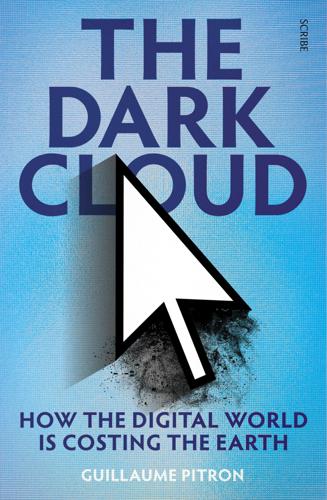
The Dark Cloud: How the Digital World Is Costing the Earth
by
Guillaume Pitron
Published 14 Jun 2023
In 2015, the American geographer and artist Trevor Paglen created a superb exhibition by photographing the optical cables around the world used by the National Security Agency (NSA). The images are available in the articles ‘Photos of the submarine internet cables the NSA probably tapped’, Wired, 20 September 2016, and ‘Trevor Paglen plumbs the internet’, The New Yorker, 22 September 2015. 13 Google is currently deploying a new cable, Grace Hopper, named after the American computer science researcher (1906–1992), between New York, the UK, and Spain (‘Google is laying a giant new undersea internet cable stretching from New York to the UK and Spain’, Business Insider India, 28 July 2020), while Facebook is laying another (2Africa) around the African continent (‘Cabling Africa: the great data race to serve the ‘last billion’’, Financial Times, 31 January 2021).

Zeitgeist
by
Bruce Sterling
Published 1 Nov 2000
O’Houlihan gasped in astonishment. “Your daughter, Starlitz? Your daughter by what?” She paused. “Not those little toll-fraud dyke bitches from Oregon.” “Uh, yeah, one of them.” “Why do men do this to themselves?” said O’Houli-han wonderingly. “When there are wonderful women in the world, like Grace Hopper, and Madeleine Albright, and Janet Reno. Honest women. Clean. Dedicated. Faithful public servants.” “It’s not just asking for me, okay? It’s for the kid. They’ll book her in some kind of juvenile facility, and she’s led a really sheltered life. She’s only eleven years old.” “So what is this alleged child’s name?
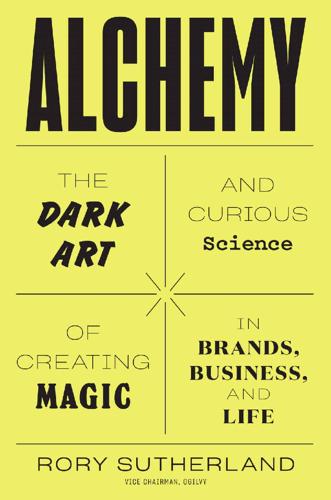
Alchemy: The Dark Art and Curious Science of Creating Magic in Brands, Business, and Life
by
Rory Sutherland
Published 6 May 2019
Almost overnight, Harvey Mudd’s introductory computer science course went from being the most despised required course to the absolute favourite. That was just the beginning. Improving the introductory course obviously helped, but it was also important to ensure that women signed up for another class. The female professors took the students to the annual Grace Hopper Conference, an annual ‘celebration of women in technology’. It was an important step in demonstrating that there was nothing weird or anti-social about women working in tech. Finally, the college offered a summer of research for female students to apply their new-found talents to something useful and socially beneficial.

The Zenith Angle
by
Bruce Sterling
Published 27 Apr 2004
So Van had paid for Grendel’s hardware himself. Van still knew that this was the sensible choice. He knew that the baby CCIAB would quickly die if they didn’t prove their serious chops as go-to technical people. Jeb had promised that the feds would be good for Van’s money sooner or later. As the legendary Admiral Grace Hopper had often told Jeb, it was always easier to apologize to a bureaucracy than it was to get permission. Jeb did not have the necessary money, himself. Jeb had spent most of the last twenty years as a federal law-enforcement instructor. So, Van personally tasked Fawn with buying 350 used PCs on eBay.
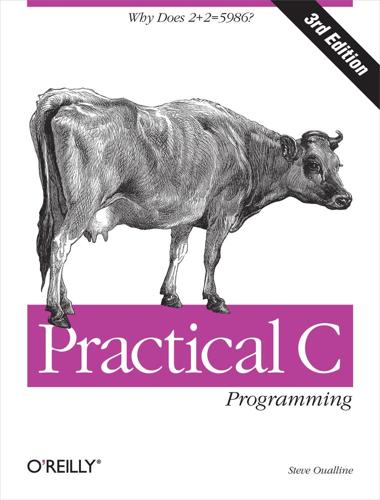
Practical C Programming, 3rd Edition
by
Steve Oualline
Published 15 Nov 2011
It would be nice if we could write programs in English. Then we could tell the computer, “Add up all my checks and deposits, then tell me the total,” and the machine would balance our checkbook. But English is a lousy language when it comes to writing exact instructions. The language is full of ambiguity and imprecision. Grace Hopper, the grand old lady of computing, once commented on the instructions she found on a bottle of shampoo: Wash Rinse Repeat She tried to follow the directions, but she ran out of shampoo. (Wash-Rinse-Repeat. Wash-Rinse-Repeat. Wash-Rinse-Repeat...) Of course, we can try to write in precise English.
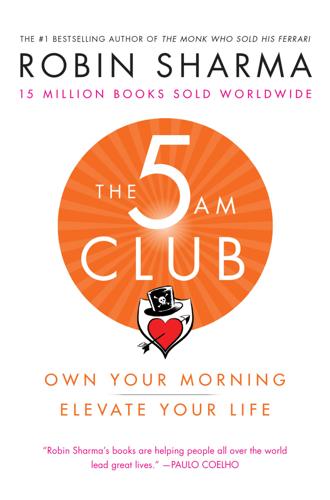
The 5 AM Club: Own Your Morning. Elevate Your Life.
by
Robin Sharma
Published 4 Dec 2018
And between the trustworthy voice of your intuition and the persuasive pronouncements of your fears. In solitude, you’ll also receive the disruptive insights that will transform your field. I know it sounds strange but amid serenity, you’ll actually visit the alternate reality in which visionaries like Nikola Tesla, Albert Einstein, Grace Hopper, Thomas Edison, John D. Rockefeller, Marie Curie, Andrew Carnegie, Katharine Graham, Sam Walton, Rosalind Franklin, and Steve Jobs, among other luminaries, spent much time. Why do you think the legendary scientists, inventors, industrialists and artists all made so much effort to be alone? I’ve shared with you that long stretches spent in noiseless contemplation is one of the secrets of the advanced mind.

The Big Nine: How the Tech Titans and Their Thinking Machines Could Warp Humanity
by
Amy Webb
Published 5 Mar 2019
Evelyn Boyd Granville, a PhD in mathematics who developed the computer programs used for trajectory analysis in the first US-manned missions to space and the moon. Betty Holberton, mathematician and one of the original programmers for the ENIAC computer. She invented breakpoints in computer debugging. Grace Hopper, computer scientist and eventual creator of COBOL, an early programming language still in use today. Mary Jackson, engineer and mathematician, who later became NASA’s first Black female engineer. Kathleen McNulty, mathematician and one of the original programmers for the ENIAC computer. Marlyn Meltzer, mathematician and one of the original programmers for the ENIAC computer, which was the first all-electronic programmable computer.
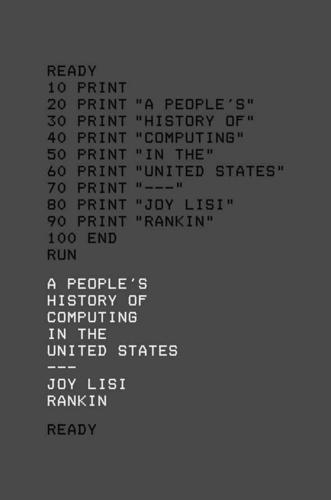
A People’s History of Computing in the United States
by
Joy Lisi Rankin
The program for MIT’s lecture series presented a who’s who of the American scientific and computing elite. Vannevar Bush directed the Office of Scientific Research and Development during World War II; he had invested in American science at an unprecedented rate to support the war effort. Jay Forrester directed Project Whirlwind and then Lincoln Lab, where he led the design of SAGE. Grace Hopper worked with Harvard’s computer during World War II before introducing new programming techniques and the computer compiler to the industry during the 1950s. Kemeny spoke, as did the physicist Sir Charles Percy (C. P.) Snow, the author of The Two Cultures and the Scientific Revolution. Other speakers included John Mauchly, well known to this community as the cocreator of World War II’s ENIAC (Electronic Numerical Integrator and Computer), America’s first 112 A People’s History of Computing in the United States electronic computer; Marvin Minsky, the codirector of MIT’s Artificial Intelligence group; and Norbert Wiener, a leading proponent of cybernetics, an influential approach to scientific problems of control and communication.

Men Who Hate Women: From Incels to Pickup Artists, the Truth About Extreme Misogyny and How It Affects Us All
by
Laura Bates
Published 2 Sep 2020
Of course, MGTOW philosophy gifts this community a particularly powerful rationale for the exclusion of women. As one typical site puts it: ‘The internet was… created by men (for other men), and it is only by our divine manly grace that women are permitted to use it.’ Tell that to Ada Lovelace and Grace Hopper. MGTOW ideology has also spawned a number of spin-off and related online movements, including IBMOR (Introspective Black Men of Reform) – an online movement with extremely similar aims, but the additional desire to overthrow white supremacy. ‘INTROSPECTIVE BLACK MEN OF REFORM (IBMOR)’, declares the community page for the group, in dramatic capital letters, ‘ARE BLACK MEN WHO ARE DEDICATED TO SELF-STUDY AND SELF IMPROVEMENT.

The Equality Machine: Harnessing Digital Technology for a Brighter, More Inclusive Future
by
Orly Lobel
Published 17 Oct 2022
It was only in 2018 that the prestigious journal Nature, along with other established journals such as Scientific American, announced that they would no longer consider articles using the Lena image. That year, TensorFlow, a leading image classification software, used a photograph of pioneering computer scientist and U.S. Navy Rear Admiral Grace Hopper as a test image. Another article on advances in compressed sensing used a photo of model Fabio Lanzoni—as in long-haired, shirtless, just-first-name Fabio of 1990s romance novel cover fame—with an eye toward flipping the gender of the objectified test image. Then in November 2019, Code Like a Girl, a non-profit founded with the vision to advance female leadership in the fields of computer science and tech, released a film and campaign called Losing Lena.

Dreaming in Code: Two Dozen Programmers, Three Years, 4,732 Bugs, and One Quest for Transcendent Software
by
Scott Rosenberg
Published 2 Jan 2006
One day we could find ourselves in a world where software does not need to be programmed at all. For many on this quest, the common grail has been the idea of “automatic software”—software that nonprogrammers can create, commands in simple English that the computer can be made to understand. This dream was born at the dawn of the computer era when Rear Admiral Grace Hopper and her colleagues invented the compiler. “Hopper believed that programming did not have to be a difficult task,” her official Navy biographical sketch reports. “She believed that programs could be written in English and then translated into binary code.” Flow-Matic, the language Hopper designed, became one of the roots of Cobol, the business-oriented programming language that was still in wide use at the turn of the millennium.

Machines of Loving Grace: The Quest for Common Ground Between Humans and Robots
by
John Markoff
Published 24 Aug 2015
“I should give everyone that tool in vision research,” he decided. While his boss was on sabbatical he launched OpenCV, or Open Source Computer Vision, a software library that made it easier for researchers to develop vision applications using Intel hardware. Bradski was a believer in an iconoclastic operating style that was sometimes attributed to Admiral Grace Hopper and was shared by many who liked getting things done inside large organizations. “Better to seek forgiveness than to ask permission” was his motto. Eventually OpenCV contained a library of more than 2,500 algorithms including both computer vision and machine-learning software. OpenCV also hosted programs that could recognize faces, identify objects, classify human motion, and so on.

Code: The Hidden Language of Computer Hardware and Software
by
Charles Petzold
Published 28 Sep 1999
Throughout the history of programming languages, however, people have tried creating languages that could be used by a wider range of people. One of the first successful languages designed for businesspeople and business problems was COBOL (the COmmon Business Oriented Language), still widely used today. A committee that combined American industries and the defense department created COBOL beginning in 1959, influenced by Grace Hopper's early compilers. In part, COBOL was designed so that managers, while probably not doing the actual coding, could at least read the program code and check that it was doing what it was supposed to be doing. (In real life, however, this rarely occurs.) COBOL has extensive support for reading records and generating reports.
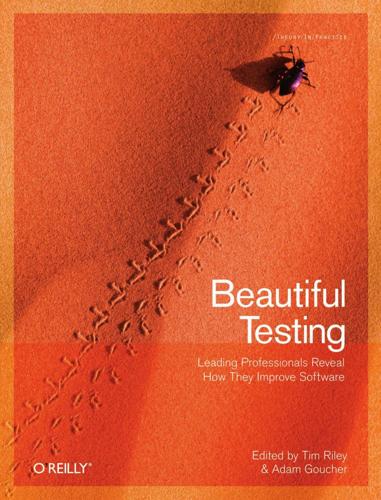
Beautiful Testing: Leading Professionals Reveal How They Improve Software (Theory in Practice)
by
Adam Goucher
and
Tim Riley
Published 13 Oct 2009
Page 92 of this notebook, shown in Figure 6-1, displays typical engineering notes from September 9, 1947: 1525 Started Mult+Adder Test. 1545 Relay # 70 Panel F (moth) in relay. First actual case of bug being found. FIGURE 6-1. The first bug found The Smithsonian’s notes alongside this page mention that the term “bug” was used in engineering at least as far back as Thomas Edison’s time. But this moth made for a very good story often told by Admiral Grace Hopper, inventor of the COBOL language and one of the computer engineers who worked on the Mark II. This bug became part of computing history. Moths are far too big to become wedged inside individual gates of modern microprocessors, but software bugs haven’t gone away. This particular bug report doesn’t describe the symptoms, but it contains two important details that are unfortunately lacking in many contemporary bug reports: 68 CHAPTER SIX • The bug is closely associated with the test procedure (presumably the test procedure that revealed this bug). • When the root cause was found, it was explained along with a detailed attachment.
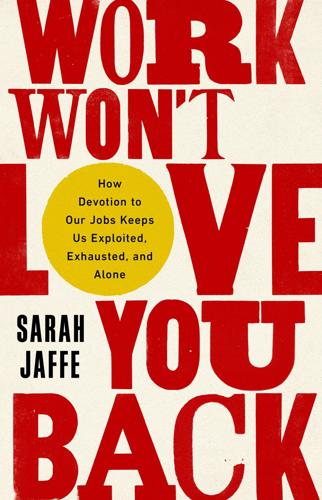
Work Won't Love You Back: How Devotion to Our Jobs Keeps Us Exploited, Exhausted, and Alone
by
Sarah Jaffe
Published 26 Jan 2021
“People never recognized, they never acted as though we knew what we were doing,” Jennings said. 7 After the war’s end, the women who had been pressed into wartime service were encouraged to return home, free up jobs for men, and start families. Yet the women who worked on the ENIAC had a special skill set that made them harder to replace. “We were like fighter pilots,” McNulty said. Instead, they stayed on and worked to design computers for nonmilitary uses, working alongside mathematics professor and navy reservist Grace Hopper. “Women are ‘naturals’ at computer programming,” Hopper told a reporter in 1967. Yet even then, as software work gained prestige, the men were taking it over. 8 Male programmers deliberately sought to shift the image of the field. Men, after all, wouldn’t want to go into a field seen as women’s work.
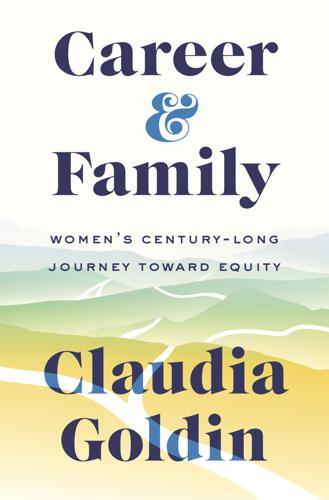
Career and Family: Women’s Century-Long Journey Toward Equity
by
Claudia Goldin
Published 11 Oct 2021
Group Two, at its start, includes women such as Barbara McClintock, whose work in genetics earned her a Nobel Prize, and Alice Kober, who helped decipher Linear B. Neither married. Also at the start of Group Two are Zora Neale Hurston, a folklorist and writer about the Black experience in America, and Grace Hopper, the pioneering computer scientist and US Navy rear admiral. Both married but had no children. Ada Comstock, another Group Two member, married at sixty-seven after a long and distinguished career as the first president of Radcliffe College. These are not average women, but they are emblematic of the lives of Group Two women at its start.
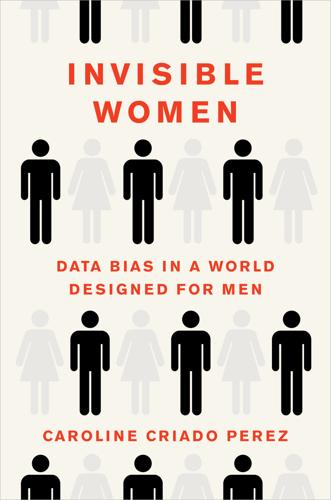
Invisible Women
by
Caroline Criado Perez
Published 12 Mar 2019
ENIAC, the world’s first fully functional digital computer, was unveiled in 1946, having been programmed by six women.57 During the 1940s and 50s, women remained the dominant sex in programming,58 and in 1967 Cosmopolitan magazine published ‘The Computer Girls’, an article encouraging women into programming.59 ‘It’s just like planning a dinner,’ explained computing pioneer Grace Hopper. ‘You have to plan ahead and schedule everything so that it’s ready when you need it. Programming requires patience and the ability to handle detail. Women are ‘naturals’ at computer programming.’ But it was in fact around this time that employers were starting to realise that programming was not the low-skilled clerical job they had once thought.
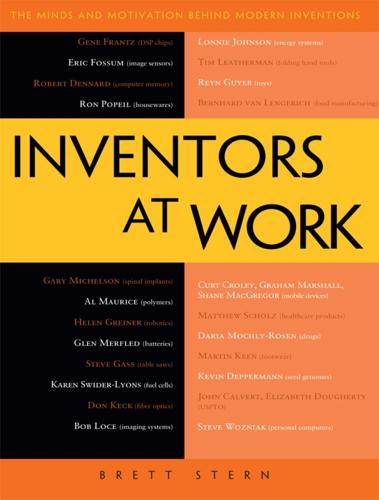
Inventors at Work: The Minds and Motivation Behind Modern Inventions
by
Brett Stern
Published 14 Oct 2012
Then build up complexity from a base of success. Stern: Are there any inventors or inventions that you admire, whether the person or the product? Greiner: I have two or three that come to mind. Mary Anderson, who invented windshield wipers in 1905. Stephanie Kwolek, who invented Kevlar. And Admiral Grace Hopper, who invented compilers. Stern: Why the windshield wipers? Greiner: Well, these inventors had to overcome more than the technical and adoption hurdles typical for any inventor. They also had to overcome gender stereotypes and biases that were even more prevalent in the past. Stern: Would you say there is a reason why women don’t get more involved in the inventing or technical world?
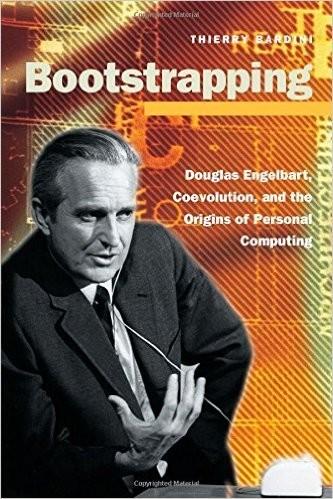
Bootstrapping: Douglas Engelbart, Coevolution, and the Origins of Personal Computing (Writing Science)
by
Thierry Bardini
Published 1 Dec 2000
In the course of these negotiations, the actors mobIhze resources not accordIng to theIr pos- sIble categOrIZatIons In the socIal or technological realm, but accordIng to a strategy that is both social and technological. The result of these negotiations is a sociotech- nological system in whIch the uncertaInty about the socIal Identities of the maJor ac- tors and the qualities of the technology is slowly dimInIshed. 2. The word "compiler" was chosen by Grace Hopper from Remington Rand when she created the A-O compIler In 1951 for the UNIVAC. Martin Campbell-Kelly and WIlham Aspray reported that she "chose the word comptler because the system would automatically put together the piece of code that made up the complete pro- gram" (Campbell-Kelly and Aspray 1996, 187). 3.

Code Complete (Developer Best Practices)
by
Steve McConnell
Published 8 Jun 2004
Most of the defects you'll have will be minor oversights and typos, easily found by looking at a source-code listing or stepping through the code in a debugger. For the remaining harder bugs, this chapter describes how to make debugging much easier than it usually is. Overview of Debugging Issues The late Rear Admiral Grace Hopper, co-inventor of COBOL, always said that the word "bug" in software dated back to the first large-scale digital computer, the Mark I (IEEE 1992). Programmers traced a circuit malfunction to the presence of a large moth that had found its way into the computer, and from that time on, computer problems were blamed on "bugs."
…
IEEE Recommended Practice for Software Requirements Specifications”. Los Alamitos, CA: IEEE Computer Society Press. [bib36entry237] IEEE, 1991. IEEE Software Engineering Standards Collection, Spring 1991 Edition. New York, NY: Institute of Electrical and Electronics Engineers. [bib36entry238] IEEE, 1992. “"Rear Adm. Grace Hopper dies at 85."” IEEE Computer, February, 84. [bib36entry239] Ingrassia,FrankS. 1976. “"The Unit Development Folder (UDF): An Effective Management Tool for Software Development."” TRW Technical Report TRW-SS- 76-11. Also reprinted in Reifer 1986, 366–79. [bib36entry240] Ingrassia,FrankS. 1987.

Practical OCaml
by
Joshua B. Smith
Published 30 Sep 2006
Overview of Programming Styles Functional preprogramming (FP) is only one of several programming styles that are currently in widespread use. Each of these programming styles seeks to maximize programmer efficiency and minimize bugs. Programming has always tried to do these things, even before Grace Hopper created the first useful compiler. ■Note Back in the days before assembly language, programmers had to program in machine code directly or hard-wire the logic directly. For these purposes, programming styles can be divided into three groups: structured, object-oriented, and functional. They are not strong divisions, and often a given programming language supports features of all three.

Lifespan: Why We Age—and Why We Don't Have To
by
David A. Sinclair
and
Matthew D. Laplante
Published 9 Sep 2019
In 1957, the professor of genetics, from the University of Edinburgh, was trying to understand how an early embryo could possibly be transformed from a collection of undifferentiated cells—each one exactly like the next and with the exact same DNA—to the thousands of different cell types in the human body. Perhaps not coincidentally, Waddington’s ponderings came in the dawning years of the digital revolution, at the same time that Grace Hopper, the mother of computer programming, was laying the foundation for the first widely used computer language, COBOL. In essence, what Waddington was seeking to ascertain was how cells, all running on the same code, could possibly produce different programs. There had to be something more than genetics at play: a program that controlled the code.
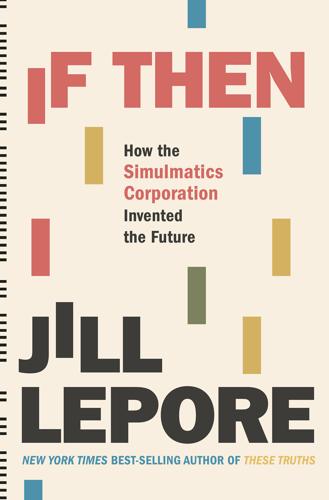
If Then: How Simulmatics Corporation Invented the Future
by
Jill Lepore
Published 14 Sep 2020
Kennedy Jr., “Electronic Computer Flashes Answers, May Speed Engineering,” NYT, February 15, 1946. See my discussion in These Truths, 557–65. Norbert Wiener, Cybernetics (New York: Wiley, 1948). Clive Thompson, “The Secret History of Women in Coding,” NYT, February 13, 2019. Grace Hopper, “The Education of a Computer [1952],” Annals of the History of Computing 9 (1988): 272. Louis Hyman, Temp: How American Work, American Business, and the American Dream Became Temporary (New York: Viking, 2018), 127. Joy Lisi Rankin, A People’s History of Computing in the United States (Cambridge, MA: Harvard University Press, 2018), 14.
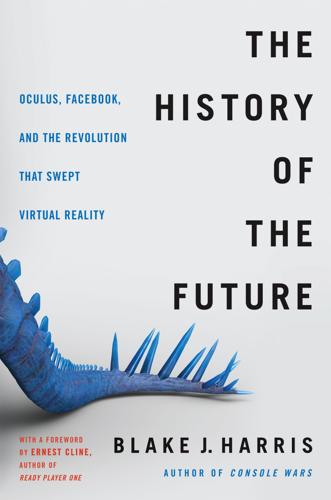
The History of the Future: Oculus, Facebook, and the Revolution That Swept Virtual Reality
by
Blake J. Harris
Published 19 Feb 2019
She nodded not because she was dazzled by Home, but because after fourteen years in Silicon Valley, she finally felt like she’d found a company that felt like home: Facebook. Kalinowski had only been with Facebook for a couple of months now, but her journey there began more than a year earlier. In Portland, in November 2011, at the annual Grace Hopper Celebration of Women in Computing where Kalinowski crossed paths with a recruiter who expressed interest in bringing her to Facebook. At the time, Kalinowski was at Apple, where she was the technical lead on the company’s funky-looking, coffeemaker-inspired cylindrical Mac Pro. Though Kalinowski greatly enjoyed working on that project, she had been at Apple for several years and was open to the idea of making a change, especially if that meant going to a company with a reputation like Facebook; and even more especially upon learning that they were looking to hire her for a “supersecret project.”
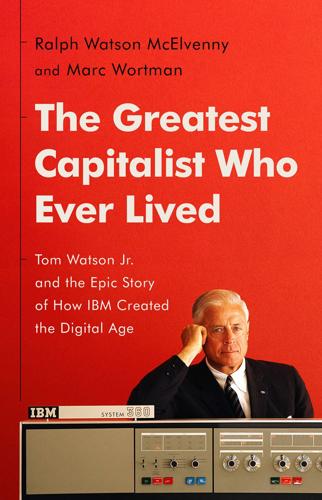
The Greatest Capitalist Who Ever Lived: Tom Watson Jr. And the Epic Story of How IBM Created the Digital Age
by
Ralph Watson McElvenny
and
Marc Wortman
Published 14 Oct 2023
Watson Jr., Father, Son & Co., 230–233. 17. Emerson W. Pugh, Building IBM: Shaping an Industry and Its Technology (Cambridge, MA: MIT Press, 1995), 208. 18. “SAGE: The First National Air Defense Network,” IBM, www.ibm.com/ibm/history/ibm100/us/en/icons/sage/; Cortada, IBM, 201. 19. Kurt W. Beyer, Grace Hopper and the Invention of the Information Age (Cambridge, MA: MIT Press, 2009), 255–261. 20. “SAGE: The First National Air Defense Network,” IBM, www.ibm.com/ibm/history/ibm100/us/en/icons/sage/. 21. “Special Report: IBM A Special Company,” Think magazine (1989), 47; see also Chuck Boyer, The 360 Revolution (IBM, 2004), 18. 22.
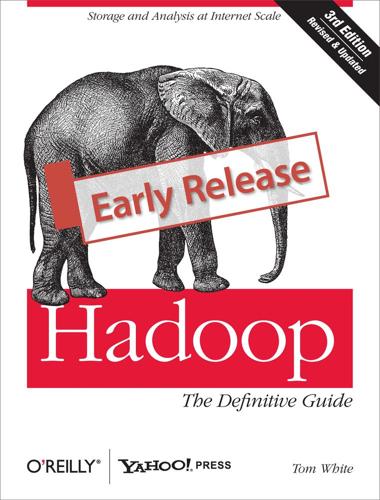
Hadoop: The Definitive Guide
by
Tom White
Published 29 May 2009
My daughters, Emilia and Lottie, have been very understanding, and I’m looking forward to spending lots more time with all of them. Chapter 1. Meet Hadoop In pioneer days they used oxen for heavy pulling, and when one ox couldn’t budge a log, they didn’t try to grow a larger ox. We shouldn’t be trying for bigger computers, but for more systems of computers. —Grace Hopper Data! We live in the data age. It’s not easy to measure the total volume of data stored electronically, but an IDC estimate put the size of the “digital universe” at 0.18 zettabytes in 2006, and is forecasting a tenfold growth by 2011 to 1.8 zettabytes.[2] A zettabyte is 1021 bytes, or equivalently one thousand exabytes, one million petabytes, or one billion terabytes.

Seeking SRE: Conversations About Running Production Systems at Scale
by
David N. Blank-Edelman
Published 16 Sep 2018
Lorch, Yingnong Dang, Murali Chintalapati, Randolph Yao, “Gray Failure: The Achilles’ Heel of Cloud-Scale Systems” 6 Jude Karabus, “BA’s ‘global IT system failure’ was due to ‘power surge’”. 7 Gareth Corfield, “BA IT systems failure: Uninterruptible Power Supply was interrupted”. 8 Cited by John Allspaw: Koen, Billy V. (1985). Definition of the Engineering Method. Washington, DC: American Society for Engineering Education, p. 5. 9 Lafeldt, Mathias. (2017). “Impermanence: The Single Root Cause”, Medium.com. 10 Watch Grace Hopper illustrate a nanosecond. Understanding the state of a computer system that executes multiple instructions per nanosecond when your view of that system is an indeterminate length of time removed from the real execution means that the interface through which you come to understand the system is, at best, seeing “through a glass darkly.” 11 Drucker, Peter F. (1963).

Wired for War: The Robotics Revolution and Conflict in the 21st Century
by
P. W. Singer
Published 1 Jan 2010
Air Force (formed from the army’s Air Corps) was so uninterested in drones and guided missiles that their further development was left to the army and navy ordnance departments. Computers, though, continued to take off, with the military at the center of their funding and development. Among the early pioneers in this period was “Amazing” Grace Hopper. Hopper was a U.S. naval officer who worked on the development of the Harvard Mark I computer made by IBM. The Mark I, which was fifty-one feet in length and had some five hundred miles of wire, is credited by many as being the first digital computer that could store numbers and automatically calculate them.